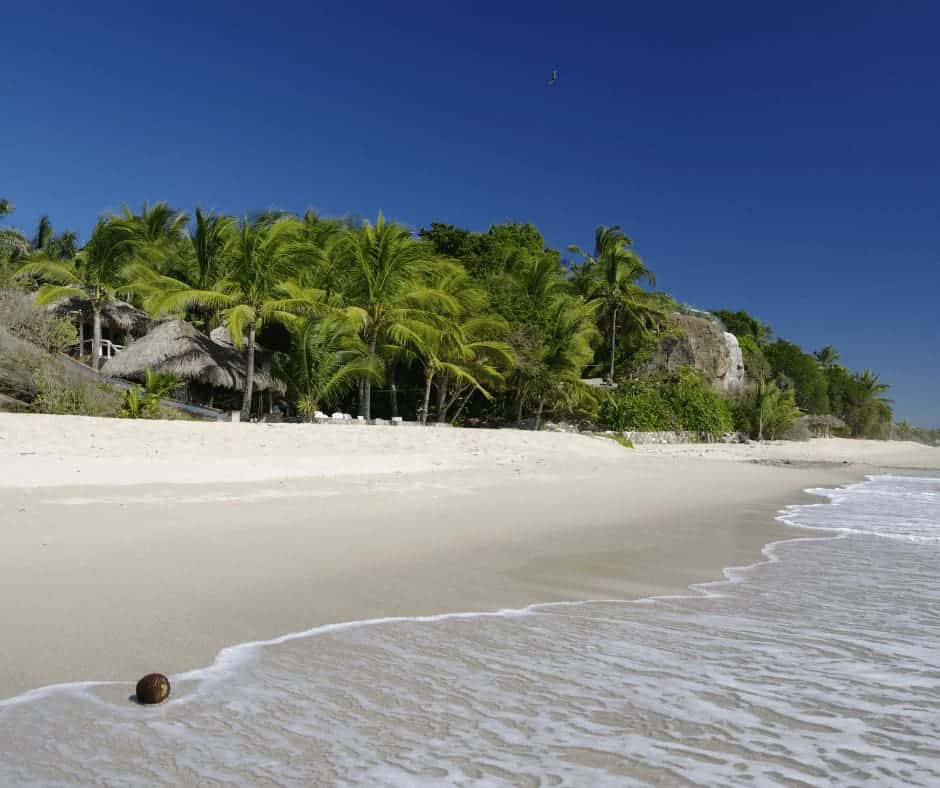
The Quick Guide To
Living in Mexico
For Expats (2025 Edition)
Living in Mexico can be a truly wonderful experience! You can enjoy amazing weather and spectacular scenery without having to give up all the comforts you are used to from home. AND THE BEST PART: You can do all of this while reducing your cost of living!
I wrote this quick guide on Living in Mexico as my attempt at putting some of the most frequently asked questions I get on a single page. Saving you hundreds of hours scratching your head for answers. It’s a condensed version of the Complete Mexico Relocation Guide.
Living in Mexico can truly be a wonderful experience! You’ll enjoy various types of landscapes, fantastic weather, amazing food, and gorgeous scenery. You can enjoy life in Mexico without sacrificing all the comforts from back home. And you’ll love how you can enjoy life in Mexico while reducing your cost of living!
I’ll give you an overview of what it’s like living in Mexico by giving you the good, the bad, and everything in between. This quick guide to Living in Mexico will introduce you to Mexico and all the important questions you’ll have before moving there.
Ready to move to Mexico? Check out our Complete Mexico Relocation Guide. And Get Access to our Network of Trusted Contacts. We have immigration facilitators, realtors, healthcare brokers, relocation tour guides and more!
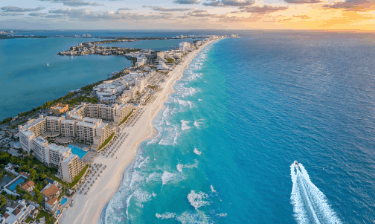
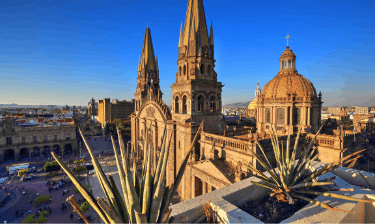
Is Living in Mexico For You?
You’ve probably heard Mexico is one of the MOST popular expat destinations in the world.
In fact, Mexico is consistently named one of the “Best Places To Live” for expats looking to live overseas. It is constantly at the top of the ranks on Forbes, and similar publications. Mexico is a large country, and that means you can have whatever landscape you dream of. Whether you love the beach, the mountains, city life, or countryside living, you can find it all in Mexico.
Mexicans are generally very happy! It’s not uncommon to see a Mexican with a positive outlook on life, even if they are going through hardship and trouble. In fact, In Latin America, Mexico shines as the second happiest country, just after Costa Rica, according to the 2024 World Happiness Report. The top ten happiest countries in the region include Costa Rica, Mexico, Uruguay, El Salvador, Chile, Panama, Guatemala, Nicaragua, Brazil, and Argentina.
The report, which ranks countries on life satisfaction, well-being, and factors like economic stability, social support, and freedom, shows that Mexico consistently stands out for its high levels of happiness and quality of life. This makes Mexico a compelling choice for those considering a move from Canada, the USA, or Europe, offering a balanced lifestyle enriched by a strong community, cultural vibrancy, and a welcoming atmosphere.
For those seeking a fulfilling life abroad, Mexico’s ranking underscores its appeal as a destination where well-being and happiness are within reach. And despite what some people may read on social media, Mexicans are some of the most welcoming people to foreigners of all backgrounds.
It offers warm weather up North and far South and cooler and drier weather in the central highlands. You’ll also enjoy a comfortable lifestyle at costs much lower than where you may be living now.
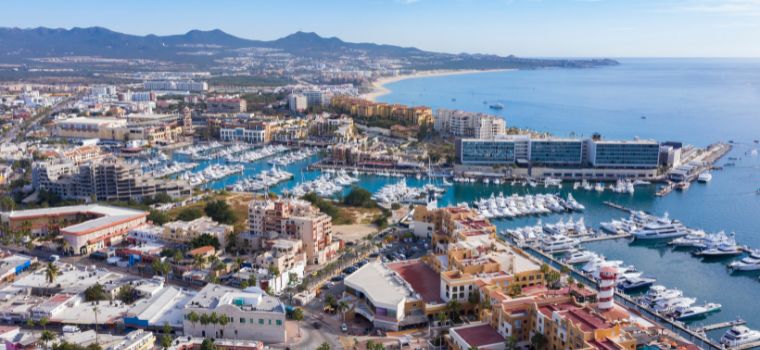
Does this mean you should sell all your belongings, pack your bags, and move to Mexico right away? Well, no. I highly suggest you do not move to Mexico without first visiting it.
Mexico is NOT for EVERYONE
My goal with this quick guide is to give you the confidence to determine if living in Mexico is right for you. Then, you can take it to the next level and plan your scouting visit.
Visit our Mexico Relocation Tours page. See how you can plan your scouting trip to Mexico with the help of a local and hit the ground running!
I wrote the Living in Mexico guide to help prevent you from making a potentially costly mistake.
There is so much more to Relocating to Mexico than just buying a plane ticket and renting a home south of the border. Many considerations are unique to you, and my goal with this guide is to cover many of them.
In this guide, I provide an overview of the numerous options available for living in Mexico. I’ll give you suggestions that will help guide you in making the right decision for your future as a potential expat in Mexico.
This quick guide is packed with information, but it’s also a quick read. The topics in this guide aren’t listed in any particular order. You can read the guide from top to bottom or use the table of contents to skip to the part you are most interested in.
LET’S JUMP RIGHT IN!
Why Live in Mexico?
The overarching theme of all the posts I read on various Facebook groups, TripAdvisor Forums, YouTube, Interviews with Expats, or different blog posts is about your WHY for living in Mexico. This is one of those topics that’s going to be unique to YOU. Having said that, here are some of the most common reasons for living and retiring in Mexico.
Cost of Living
A large number of Americans and Canadians move to Mexico because their dollars go much further.
With the rising costs of housing, healthcare, taxes, and utilities, many feel their paycheck no longer cover their basic needs back home. Being an economic refugee is an everyday reality many expats face as they plan for their future.
Luckily, living in Mexico is a solution that many have found to be their saving grace. Don’t misunderstand me, though, I am not suggesting you move to Mexico only because you can save some money. You also can’t expect to live in Mexico like a king and expect to pay pennies.
However, you can absolutely have a comfortable lifestyle for as little as $1,500 USD/month for a single person and $2,000 USD/month for a couple. It all depends on the city you live in, the type of home you rent, your health, and your lifestyle. We even know people who live on less. But I want to be realistic about your needs.
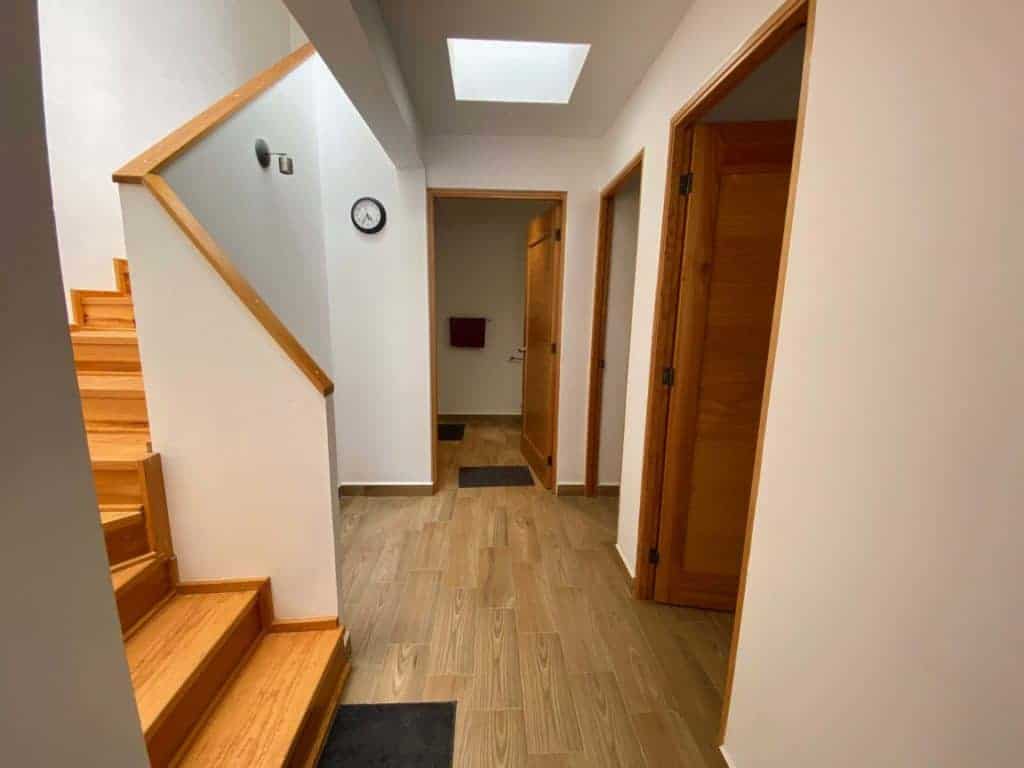
The fact is the average Mexican household of 4 lives on as little as $1k USD/month. But I also want to be fair and give you a realistic comparison of how much most American and Canadian families spend.
$2000 USD- $2500 a month in Mexico is enough for a couple to cover the essentials and have enough money left over to have a house cleaner once a week who also cooks and does laundry. A good rule of thumb is that if you qualify for residency with economic solvency, you’ll have a very comfortable life in Mexico.
Your dollar goes a lot further here. If your budget is more than $2k dollars a month, you’ll be able to afford higher-end homes, restaurants, traveling, a live-in helper, and other amenities. Mexico offers a lifestyle for everyone and every budget. Another important aspect of your cost of living will be where in Mexico you decide to set some roots. For example, the cost of living in San Miguel de Allende, Ajijic, Rosarito, Playa del Carmen, or Puerto Vallarta will be higher than living in less touristic cities like Cholula, Chapala, Puebla, Valladolid, Cuernavaca, and the like.
Quality of Life
A lower cost of living doesn’t mean cheap. Most people living in Mexico from the U.S. or Canada can agree that their expenses have decreased. All the while, their quality of life has remained the same or has gotten a nice upgrade. So why pay more for the same life?
Most of the people you see in my videos about living in Mexico mention how much their stress levels have gone down since moving to Mexico. Many have made positive lifestyle changes like walking more, eating healthier, socializing more, and learning to slow down. Because we all know stress is a major contributor to other diseases.
Mexico has a very laid-back culture, and Mexicans are genuinely friendly! In a survey done with 20,000 expat participants, Internations.org named Mexico #1 on Ease of Settling In. Imagine crossing the border as an immigrant and being welcomed with arms wide open. And in a Gallup survey conducted in 2024, Mexico ranked as the 2nd happiest country in Latin America.
Your Ideal Weather
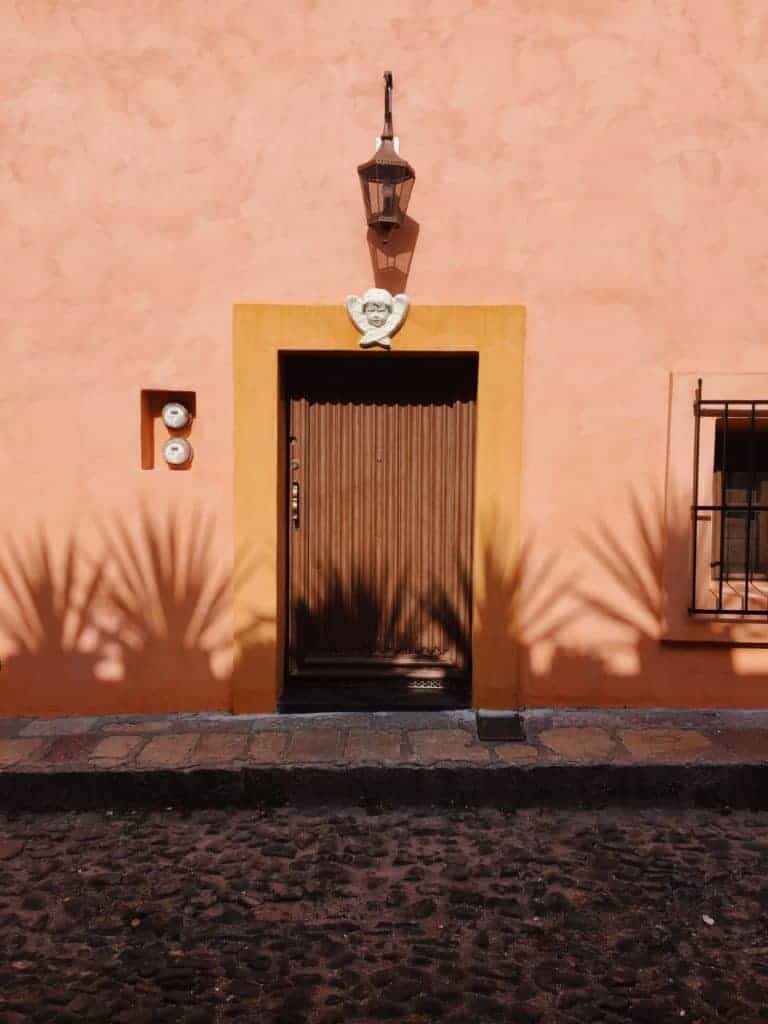
There are beaches, mountains, rainforests, and deserts in Mexico. The weather throughout the country is very different. That means you can find your ideal weather.
If you prefer cooler, mountainous temperatures, you’ll find a lot of cities to choose from. If you like hot and sunny days, there are plenty of beaches that’ll be perfect for you.
A really great thing about this beautiful country is how diverse the weather is and, at the same time, how you can find your ideal year-round temperature. Most of the country has constant temperatures year-round.
High-elevation cities like San Miguel de Allende, Guanajuato, Ajijic, Chapala, Guadalajara, Oaxaca, Mexico City, and San Cristóbal de las Casas will experience cold nights during the winter months. But the temperature will seldom drop below 40 degrees at night.
Whereas beaches like Mazatlan, Puerto Vallarta, Sayulita, Tulum, Playa del Carmen, Cozumel, and the like all have tropical and hot weather almost all year. The average daytime temperatures range between 80-90 degrees Fahrenheit.
Natural Beauty
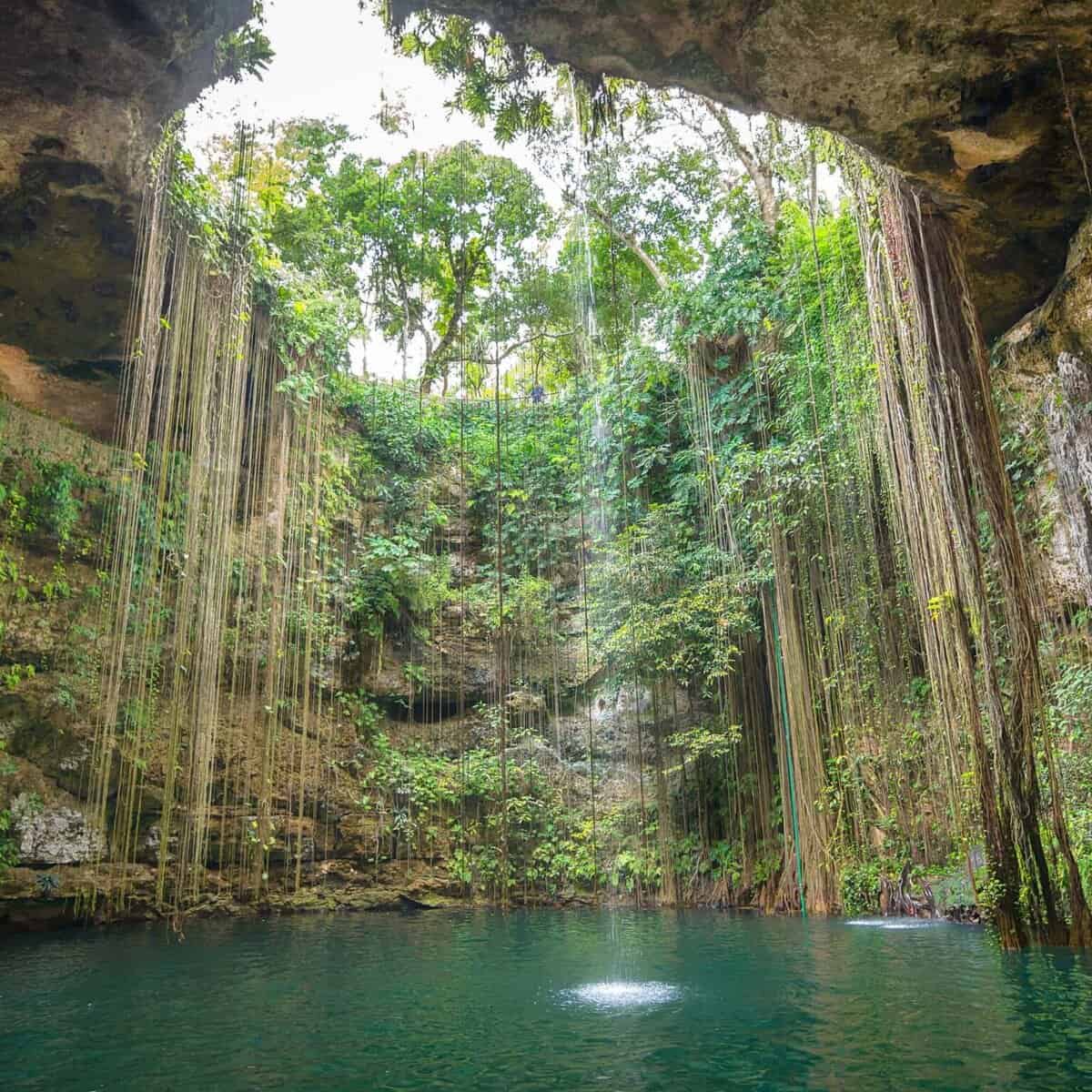
I could spend weeks and months exploring Mexico, and I’d still not be able to see it all. This large country has everything from deserts to beaches, mountains and rainforests, jungles, sinkholes, and mangroves to natural lakes.
Most of the expats who move to Mexico are surprised at the amount of bio-diversity there is.
The Pacific side is home to incredible beaches and mountains in the background. You could close your eyes and feel as though you were in Hawaii. Further south on the Yucatan peninsula, there is an abundance of tropical rainforests, mangroves, sinkholes, turquoise waters, and white sands.
The desert in the north is, by contrast, so different—miles and miles of hills, birds, and rugged terrain.
Central Mexico is green, cool, and temperate, and it produces most of Mexico’s crops. In fact, 60% of the produce in the U.S. is imported from Mexico!
Amazing Food
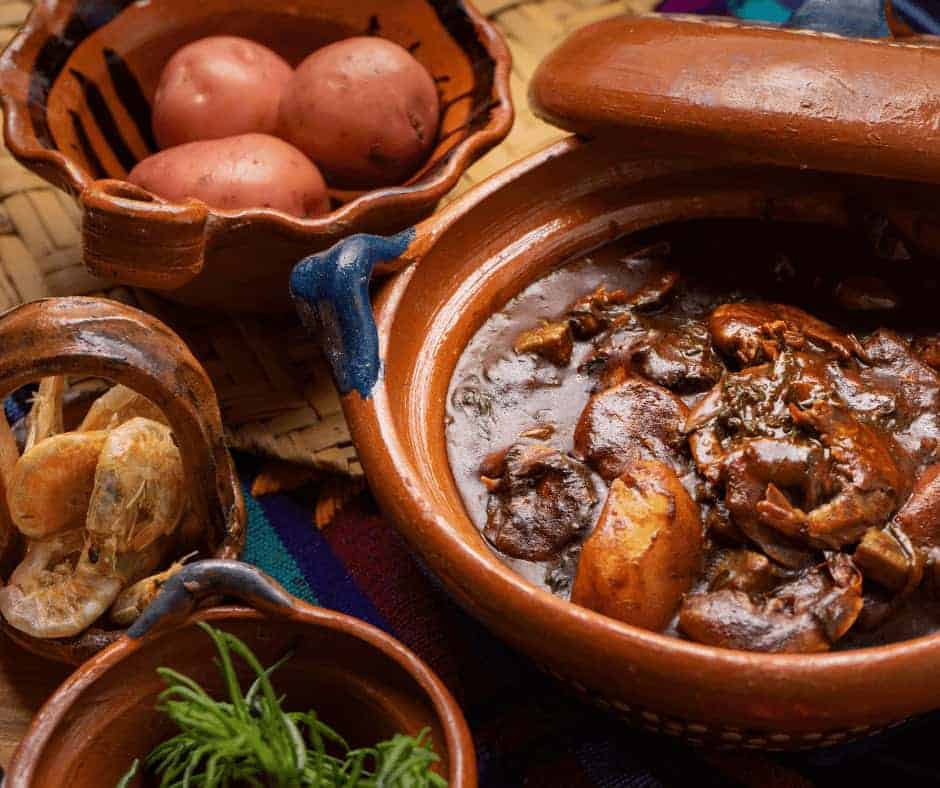
A lot of expats who move to Mexico end up losing some weight unintentionally simply because they eat more whole foods than ever before. The cost of food in Mexico is not only more affordable than most people are used to but the best fruits and vegetables you’ll ever taste come from Mexico. Even the vanilla here is unlike anything you’ll ever taste! Which, by the way, is native to Mexico.
Farmer’s Markets are bright with vegetables and spices in every color imaginable. It’s hard not to love the natural beauty in Mexico. When you live in Mexico, you’ll soon realize just how much more color you have in your life!
If you live near the coast, expect to have delicious and varied seafood available all year. In the central highlands, you can expect to have a variety of leafy greens and all the avocados you can get your hands on. Fresh food in Mexico is one of the reasons so many people love living here. And if you didn’t know, Mexico is the number 3 country in the world with the highest production of organic food!
Health Care Quality & Cost
This is an area that excites a lot of people who want to get away from high medical costs in the U.S. and other parts of the world. Without sacrificing quality, most expats save an average of 30-60% on health insurance while living in Mexico.
What could you do with that much extra cash each month? Retire sooner? Would you travel more? Would you finally get massages each month? Buy those gadgets you’ve always wanted. Eat at foodie places?
Most doctors in private hospitals completed part or all of their training in the U.S.A. or Europe. A lot of doctors and their staff speak English. But the most fantastic part is the quality of care you receive while paying less.
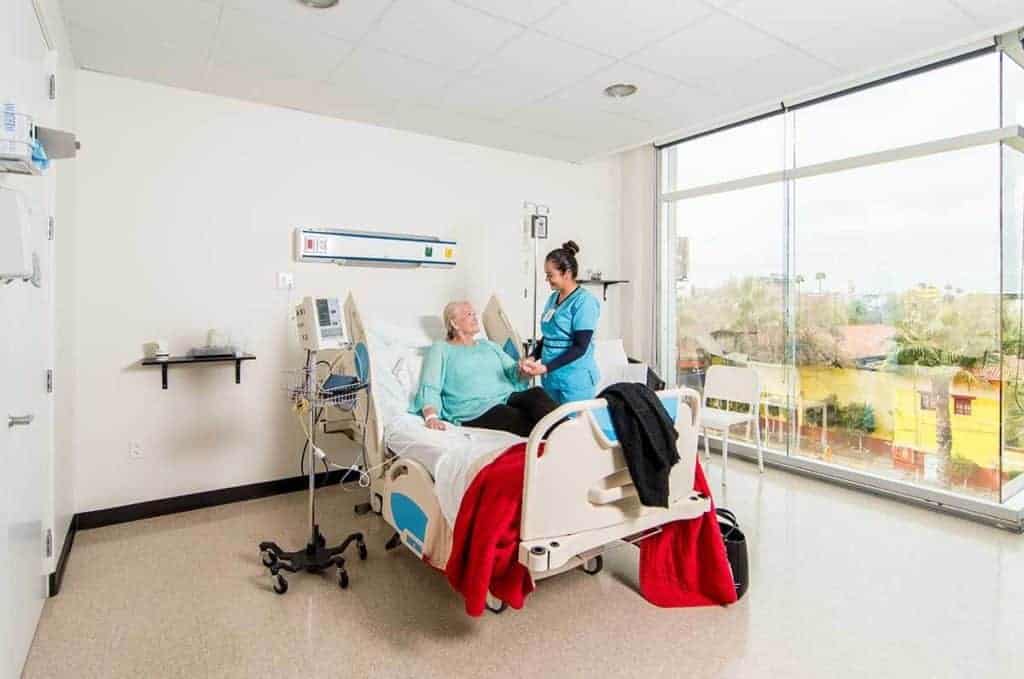
Most expats pay an average of $20 dollars (without insurance) for a visit with a specialist and about $40 dollars for full teeth cleaning plus whitening. If you have insurance, you can expect to pay less or nothing. And if you choose to go to a public hospital or a small doctor inside a pharmacy, you’ll pay around $3 dollars for a consultation.
Saving that much money every month adds up, and the stress that it takes off your shoulders adds up!
If you have private insurance, medical care is often covered at no cost! Living in Mexico will quickly save you money on medical care. Plus, most pharmaceuticals are over 30%-50% less expensive in Mexico than in the U.S. And most medications are sold without a prescription.
There’s even a whole industry focused on medical tourism in Mexico.
People worldwide travel to Mexico for medical procedures because their travel expenses and medical care are cheaper than the same procedure back home with the same quality. Most hospitals offering a variety of medical tourism packages will even pick you up at the airport, arrange for your meals and hotels, drive you to and from the hospital, and a nurse a few times a day. All of this is still usually less than the cost of a broken foot in the U.S.
In 2013, Medica Sur was the first non-American hospital to affiliate with the Mayo Clinic Care Network. This means they share the same medical focus on the patient and the passion for scientific research and health education that have distinguished Mayo Clinic over time. Medica Sur has hospitals throughout Estado de Mexico, Ciudad de Mexico, and Morelos.
Medical care in Mexico is practiced with the patient in mind- Doctors spend the necessary time with their patients without rushing their consults, and most people count on having their doctor’s direct phone number in case of follow-up questions. Plus, it’s unheard of to have to wait in Mexico to get treated. If you have the money to pay for your procedure or consult, you can usually be seen in a matter of days, not weeks.
Established Expat Communities
I’ve recently come across more and more expat communities in parts of Mexico that were once off the beaten path. The internet and social media have made it easier to learn about unpopular places and connect with strangers worldwide before making a move. And being in an expat community can make it a lot easier to integrate once you decide living in Mexico is right for you!
It’s easier to live in a foreign country if you have a group of people who share your language and can sympathize with your struggles. However, most Mexican cities don’t have a lot of English-speaking expats. So if you want to fully immerse yourself and get the authentic experience of living in Mexico, you’ll easily find that too.
Whether you want to mix in with other English speakers or want to get a feel of more authentic Mexico is up to you. Living in Mexico, you’ll have the choice of where you want to live and how comfortable you feel there.
Luckily, in today’s world of information, you can easily do some research beforehand so you can nail down a few cities and towns you’d like to scope out on your visit. And even if your Spanish is limited, Mexicans are some of the friendliest and most patient people you’ll ever meet. They’ll go out of their way to try and understand what you are trying to say.
Ease of Getting a Residency Visa
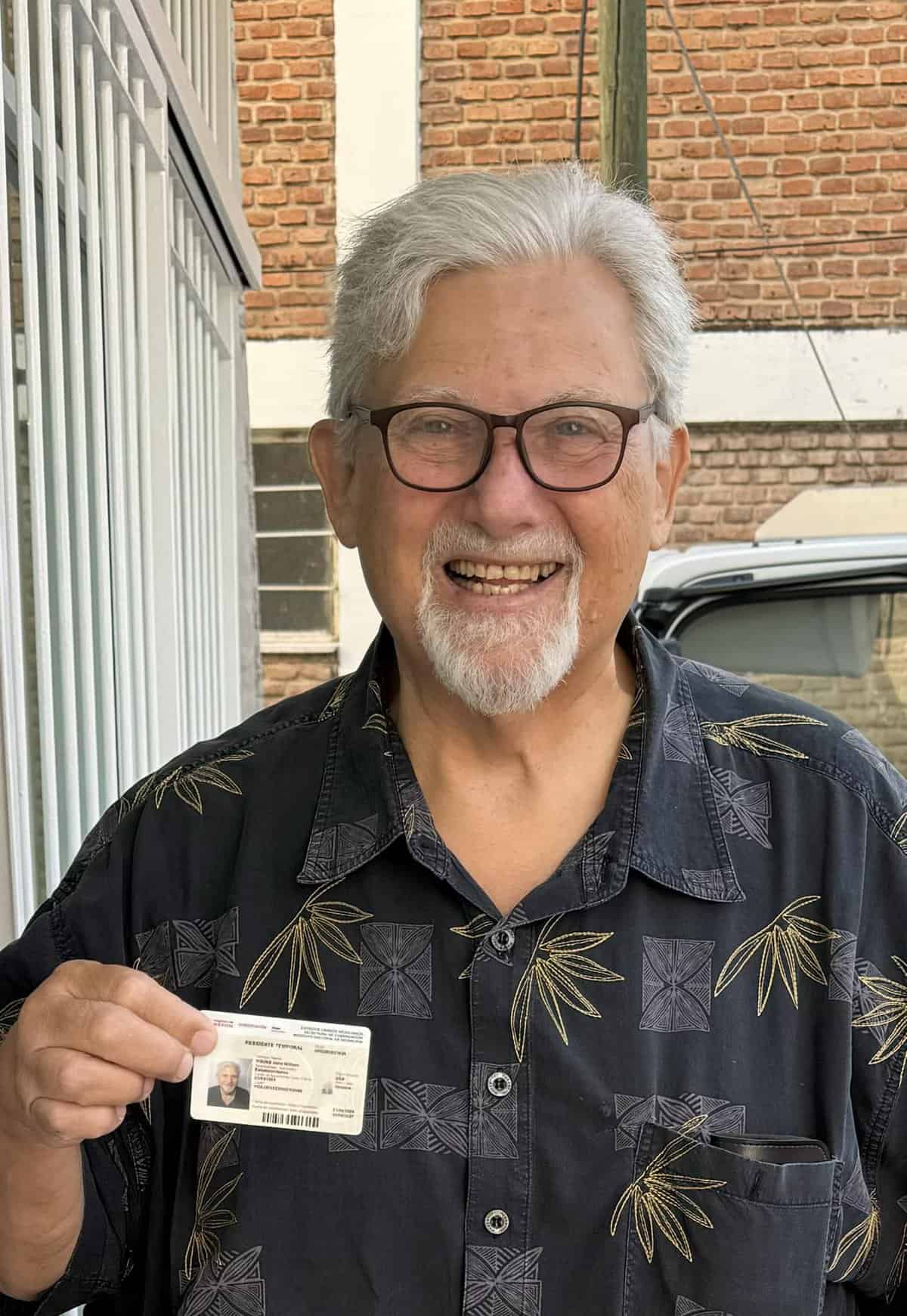
Mexico is one of the easiest countries in which to get a residency visa. The process is very straightforward and inexpensive when compared to most countries. You simply have to prove you have enough funds to cover your cost of living and pass a simple immigration interview done at the Mexican Consulate nearest you.
There are two types of residency visas: permanente or temporal. (permanent or temporary) given on proof of economic solvency. There’s also a special residency program that gives you a 4-year temporary residency without having to prove economic solvency. More on that further down.
The main difference between the two visas comes down to income requirements and, in some cases, “retirement” age when you apply.
Learn The Details About Residency Visas in Mexico.
For most expats, the process of applying for a resident visa in Mexico starts outside of Mexico at a Mexican Consulate nearest you.
Once you schedule an appointment with a Mexican consulate, the consulate will usually give you a list of requirements and paperwork needed for your interview.
During your interview, you will be asked by Mexican immigration officials things like how you plan to cover your expenses in Mexico if you receive a pension or social security, whether you are gainfully employed, how you earn a living, and what your reason for wanting to live in Mexico is.
However, most people choose to hire an immigration facilitator to hold their hand through the process.
Especially since the final step will take place in Mexico, and because all of the paperwork is in Spanish, you might want to work with someone who can help you make sure you are filling out forms correctly, knows the steps to take, and is going to ensure you have the least amount of hiccups along the way.
Another good reason you may need to hire a facilitator is to help you translate certain documents like a marriage certificate into Spanish, and Mexican Immigration will only accept this from a certified translator.
If you do decide to hire an immigration facilitator, prices will vary depending on which services they include. But you can expect to pay anywhere from $400-$700 USD. (Plus any immigration fees at the time.) It is 100% well worth the money to ensure your process is smooth and you don’t waste time and money doing things the wrong way.
Get Access to Our Directory of Recommended Immigration Facilitators throughout Mexico- Take the Guesswork and Frustration out of Your Residency Visa Process. Some of them can even help you schedule your consulate appointment for you!
A New Adventure!
And probably the most important reason for moving to Mexico is to have a new adventure!
It isn’t easy moving to a new country. You’ll face new challenges as you navigate a culture that is different than what you’re used to. If you don’t speak Spanish, you’ll have a whole other set of learning curves.
But if you’re willing to get out of your comfort zone, you can discover that Mexico is a wonderful place to make a new life. You’ll feel very accomplished when you learn new customs, traditions, languages, and experiences that have a life-changing impact.
Luckily, most Mexicans are accommodating and friendly people. So, feeling welcomed won’t be as much of an issue.
General Information About Mexico
The official name is Estados Unidos Mexicanos or the Mexican United States. However, most people simply say Mexico. The pronunciation is “MEH-HEE-CO”
Each of the 32 states has its own government, laws, and traditions.
The COMPLETE Mexico Relocation Guide outlines the best places to live, several how-to’s for things like getting a Mexican driver’s license, your residency visa, tips for finding rentals, traveling with pets, getting retiree discounts, and so much more! You’ll save yourself hundreds of hours on research on living and retiring in Mexico.
Population
According to the Mexican Government’s last estimate, there are roughly 127.5 million people living in Mexico. Some sources state there are more than 2 million U.S. citizens living in Mexico full-time. Mexico has the highest concentration of American Expats living outside of the U.S.A.
The top 10 most populated cities in Mexico are:
- Mexico City
- Tijuana
- Ecatepec
- Leon
- Puebla
- Ciudad Juarez
- Guadalajara
- Zapopan
- Monterrey
- Ciudad Nezahualcoyotl
Language
There are hundreds of pre-Hispanic dialects all throughout the country that are still spoken today, but Spanish is the official language of Mexico.
English is mostly spoken in places where there is a high concentration of expats or English-speaking tourists, either due to business or retirement communities.
The places where you will most likely hear English spoken include border towns up north, Ajijic, Chapala, Puerto Vallarta, San Miguel de Allende, Mexico City, Huatulco, and The Riviera Maya.
As you travel further from these cities or into more rural areas of Mexico, English will be less spoken, and Spanish will be necessary for you to communicate fully. But the good news is that immersion into the culture will be one of the fastest and easiest ways for you to learn Spanish!
Spanish is not considered a hard language compared to English. All you need is the desire to learn and a little practice. Even in expat communities, it’ll be essential for you to learn at least a few words to get the most out of life in Mexico.
If you’re seriously interested in learning Spanish, there are dozens of Spanish Immersion schools, online courses, and apps that offer a super-comprehensive learning path to learning.
You can practice your speaking with native speakers. You can also practice your grammar, and it will give you feedback.
Many Spanish immersion schools in Mexico can also teach you a few tricks each day for learning Mexican Spanish. Learning Spanish doesn’t have to be hard if you have the desire to learn. Doing some practical things like labeling items in your home or writing your grocery list in Spanish will help you learn the language a lot faster!
And for the most part, Mexicans are extremely helpful when they sense an effort. So if you give it your best shot and have a smile on your face, you’ll go very far in Mexico!
These are some of the most common phrases to help you get a quick start:
| Spanish | English | ||||||||
| Hola | Hello | ||||||||
| Como Estas? | How are you? | ||||||||
| Gracias! | Thank You! | ||||||||
| De nada | You’re welcome | ||||||||
| Ayuda Porfavor! | Help Please! | ||||||||
| Disculpe | Excuse Me | ||||||||
| Perdon | I’m Sorry | ||||||||
| En Donde Esta…? | Where is…? | ||||||||
| Cuanto cuesta? | How much is it? | ||||||||
| Si/No | Yes/No |
Time Zone
There are 4 time zones in Mexico
- Pacific Time Zone (UTC -8:00) (UTC -7:00 DST)
- Mountain Time Zone (UTC -7:00) (UTC -6:00 DST)
- Central Time Zone (UTC -6:00) (UTC-5:00 DST)
- Eastern Time Zone (UTC -5:00) (Quintana Roo)
Most of Mexico is no longer changing its clocks and is observing CST all year long. However, there are several exceptions:
- The state of Sonora stays on MST to stay in sync with the neighboring US state of Arizona.
- Quintana Roo has opted out of following the country’s DST regime. Following its time zone in 2015, Mexico’s easternmost state is observing EST year-round.
- The state of Baja California, and many other locations close to the country’s northern border follow the United States’ DST schedule. Here, the DST period starts on the 2nd Sunday in March and ends on the 1st Sunday in November.
I know it’s a little confusing. When you come to Mexico, make note of which cities are in what time zone so you can plan bus schedules, flights, events, and such accordingly.
Measurement and Distance
We use the metric system in Mexico. If you aren’t used to using this form of measurement, you will have to do some basic measurements in your head. I was raised measuring things in miles instead of kilometers in the U.S., and it always takes me some time when I’m in Mexico to adjust things.
Here are some tips to help you make conversions.
The Key is to memorize some conversions
- Length is measured in Meters.
- 1 meter = slightly more than 3 feet. For example, I am 5’3″ ft tall. That is 1.6 meters tall. You would say “Uno Sesenta.” 6 feet tall is 1.8 Meters.
- Speed and Distance are in Kilometers.
- 1 kilometer = more than 1⁄2 a mile. For example, 50 km is 30 miles. If you are driving 80 Mp/h, you’d be driving 130 Km/h on your dashboard.
- Weight is in Kilograms.
- 1 kilo = about 2 1⁄4 pounds. If you want to get 1Lb of ham, you’d ask for 1/2 a kilo (“medio kilo”) and you’d get a little more than 1 LB.
- Gasoline is sold by the Liter.
- 1 liter = a little more than a 1⁄4 gallon. Another way to look at it is 1 gallon is almost 4 liters. For example, a mid-sized Nissan Murano SUV can hold up to 65 liters, which is about 17 gallons.
Once you start using the metric system, the conversions will become automatic.
Geography & Landscape
Where is Mexico?
Estados Unidos Mexicanos, aka Mexico, borders the United States on the North. It also borders Belize and Guatemala in the South.
Did you know that Mexico is considered America? It is the Southernmost portion of North America, the world’s 13th-largest country, and the world’s 12th-largest economy.
Mexico has a large coastline on the Pacific, the Caribbean, the Gulf of Mexico, and the Gulf of California.
Mexico Has 32 States
Mexico is made up of 31 states, and the 32nd official state is Mexico City aka CDMX.
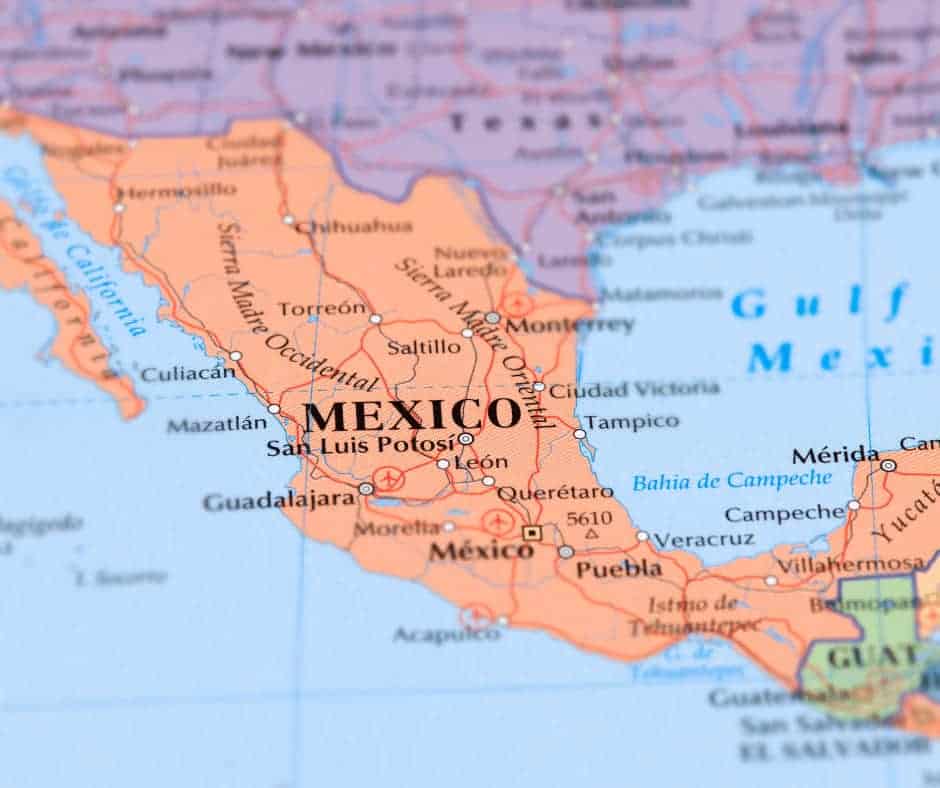
The following is a list of Mexico’s States by land size:
| Chihuahua | Morelos |
| Sonora | Sinaloa |
| Coahuila | Campeche |
| Durango | Quintana Roo |
| Oaxaca | Yucatan |
| Tamaulipas | Puebla |
| Jalisco | Guanajuato |
| Zacatecas | Nayarit |
| Baja California Sur | Tabasco |
| Chiapas | Estado de Mexico |
| Veracruz | Hidalgo |
| Baja California | Queretaro |
| Nuevo Leon | Colima |
| Guerrero | Aguascalientes |
| San Luis Potosi | Tlaxcala |
| Michoacan | Ciudad de Mexico |
Cost of Living in Mexico
Your cost of living in Mexico can be as low as $1300-$1500/Month for a single person and $1,800-$2500 a month for a couple. However, this all depends on your lifestyle, rent, and city. Plus, you have to keep in mind you’ll need more than $4,182 USD/month or $70,000 in savings to qualify for residency in Mexico.
Depending on where you decide to live in Mexico, you could save hundreds or even thousands of dollars a month on essential expenses like rent. This is especially true if you compare the cost of living in Mexico to most of the U.S., Canada, or Europe.
You will be able to afford a much better lifestyle in Mexico than what you are used to for the same amount of money back home. That’s because Mexico is very affordable in most cases, but again, it all depends on where you decide to live and how much you want to splurge.
I know people who live modestly but well on about $1,200 USD/month! That includes their rent, eating out, entertainment, visiting the doctor as needed, groceries, and even occasional house cleaning! And when I say modest, I mean they live in a small 1 bedroom apartment in a central highland town where they don’t need air conditioning.
Personally, I have never lived anywhere else where you can afford to live on $1,200 USD/month. And I’ve lived in other places aside from Mexico, like the U.S.A, Germany, and Italy.
Now, that doesn’t mean there aren’t expensive rentals or tastes. If you look at expat-saturated cities like Rosarito, Ajijic, San Miguel de Allende, Mexico City, Tulum, Cancun, and Puerto Vallarta, they have driven their prices up because of the demand from Mexican nationals and foreigners.
In some of these places, you could spend more on rent than you would in many parts of the U.S. However, even in expensive cities like these, you can still find inexpensive apartments for rent if you are willing to look where the locals do and negotiate, depending on the term of your lease.
Here’s a brief break-down of the cost of living monthly for a couple in Puerto Vallarta
(all prices are in US Dollars)
| Category | Cost |
|---|---|
| Rent | $800-$2,000 |
| Groceries | $300 |
| Electricity | $120 |
| Local Health Insurance | $300 |
| Dentist and Doctor Visits | $2-20 |
| Prescriptions when Needed | $10 |
| Netflix | $10 |
| Internet | $40 |
| Clothes and Shoes | $30 |
| Entertainment and Eating Out | $50 |
| Travel | $100 |
| House cleaning 1x week | $15 |
| Public Transportation | $30 |
| Car Insurance and Maintenance | $50 |
If you pay more in rent, your cost will go up accordingly.
If you live in the central highlands, your rent will be lower, and so will your electricity. But even with these expenses, you can see that a couple can live comfortably for less than $2000 dollars per month if you are in an $800 USD/month rental.
Communication Services
Having a cell phone in Mexico is necessary. It’s a good idea to check with your home country’s cell phone provider regarding what they cover on your plan while you are visiting Mexico. For example, I know T-Mobile and AT&T cover both talk and data on most packages while you’re in Mexico without paying extra.
Many other big-name cell phone providers offer an all-inclusive package with Mexico that allows you to use their towers at no cost or for a minimal fee. The only thing you might notice is slower internet speeds.
Once you are living in Mexico, it’ll be a lot less expensive for you to buy a SIM card and have a Mexican phone. Usually, you can get a pay-as-you SIM card for as little as $10 USD, which has enough data and minutes for the average user not to run out in a month.
There are also eSim providers like HolaFly and Airalo- both of which offer unlimited Date packages where you can use WhatsApp, Facebook, and Messenger without having to make phone calls.
With regards to the Internet, fiber optic Internet is slowly making its way to every city in Mexico. Most big and mid-sized cities have great internet coverage and download speeds of 100Mbps. However, upload speeds in Mexico can vary significantly between 5 Mbps to 100 Mbps. If you plan to work remotely while living in Mexico, you’ll want to research the area you’re moving to. Even if a city has fiber optic cables, it’s not uncommon for specific neighborhoods not to have them installed.
A lot of digital nomads like Starlink satellite internet for this reason.
Another thing to look out for is false advertising. Many companies claim to have great internet speeds of 100 Mbps. But they don’t tell you that their upload speeds are next to none. If this is important to you, make sure you do your research, especially if you plan on doing a lot of Zoom or video meetings.

Movies and TV in English can be found on various cable TV packages in Mexico. However, not all movies in Mexico are dubbed though. There are also TV channels on Mexican cable TV that are in English, but most of these are channels specific to news or lifestyle.
Most expats prefer to watch their favorite TV shows and movies on platforms like Netflix, HULU, and Amazon. And for you to be able to watch some of your favorite shows through these platforms, you’ll need to buy a VPN.
Water & Electricity
Mexico uses 110/127V as their voltage for electricity. Although this is very close to what the U.S. and Canada use (At 110 to 120V), some appliances won’t handle the extra 7 volts. Make sure you check your appliance to make sure it handles a range between 110 and 130V. Otherwise, you could fry your small appliance.
By contrast, most of Europe uses 240V and won’t have enough power to operate in Mexico unless it has dual voltage and you use an adapter. You can usually find the voltage information on the device itself by looking for the input number.
On a laptop, there’ll be a sticker on the brick of your charging cord, and it’ll be on the backside of your smartphone or tablet charger.
Water is generally NOT safe to drink out of the tap in Mexico unless you have a water filtration system. Water is usually contaminated for consumption. You can brush your teeth, shower, wash your face, wash your produce, and wash your dishes. However, I would caution you from drinking it straight out of the tap.
In Mexico, you will see big jugs of water available for sale and refill. (these are called Garrafon in Spanish) and bottled water is sold everywhere and readily available.
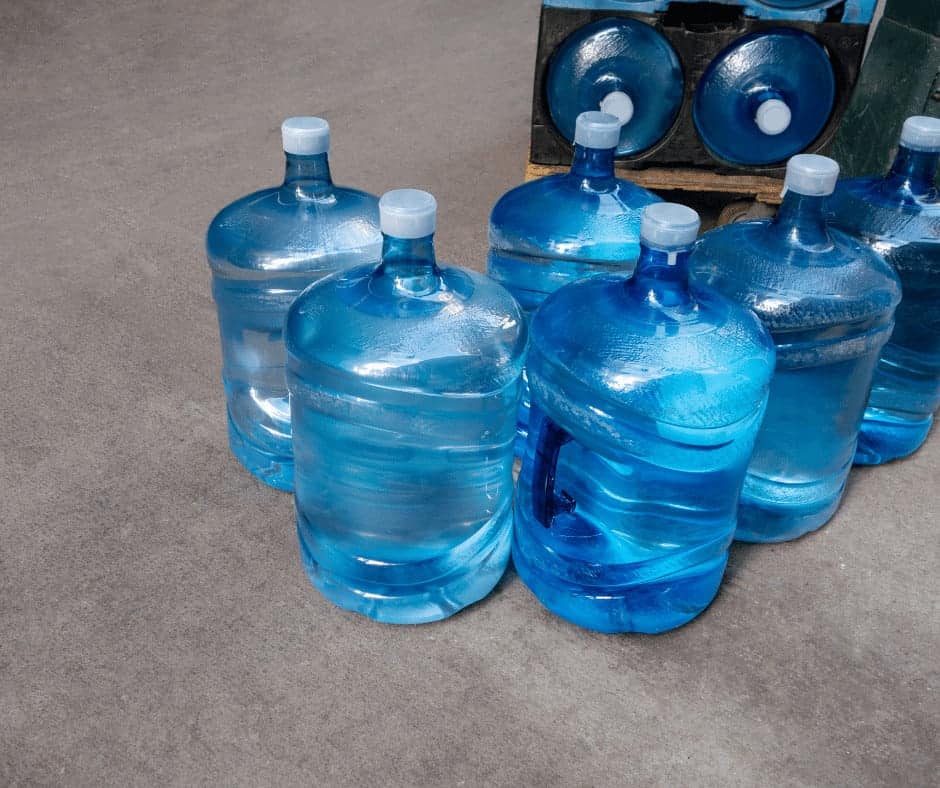
Weather
Mexico sits in the Northern Hemisphere about 1300-1400 miles from the equator. It is almost perfectly divided by the Tropic of Cancer.
Everything above The Tropic of Cancer is temperate, whereas everything South is far more humid and tropical. This gives Mexico one of the most attractive climates in the world. For most of the country, there are 2 seasons: wet and dry. Unlike some places of Canada and the United States, you won’t get the typical 4 seasons in Mexico.
Most of the beaches in Mexico experience hot and humid climates almost all year round except for a few weeks in the winter. Most beaches on the Gulf and Riviera Maya side are prone to hurricanes during the hurricane season which runs from June through October.
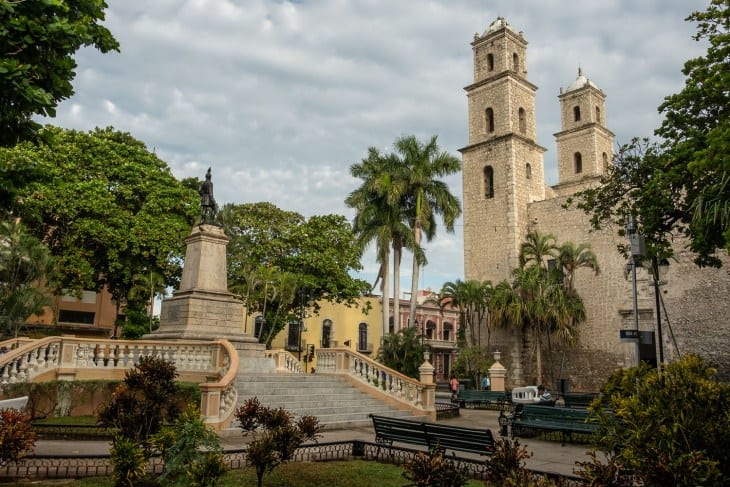
The exception to hot and humid beach weather is The Baja Peninsula, where the climate is much drier and more like the Mediterranean.
Many big cities in Mexico are in the central highlands, where the elevation is 5,000 ft and higher. This makes them cooler, especially at night. But you must realize that Mexico is a very big country, and weather varies depending on elevation and distance to the equator.
Although, it’s fair to say that most of Mexico gets a lot of sunshine. Some areas tend to get more rain than others. And in some of the cities up North, there will be snowfall once a year.
Things to Do
Mexico is an incredibly diverse country that is not only full of history from the Mayans, Aztecs, Olmecs, Toltecs, and Spaniards. But because it is such a melting pot of cultures, the country is always filled with reasons to celebrate something. It seems that almost every month, there is a religious or nationwide celebration of some sort.
Some of the largest festivities celebrated include:
- January- Dia de Reyes
- February- La Candelaria
- April- Semana Santa
- May- Dia De Las Madres
- June- Dia del Nino
- July- Dia Del Padre
- September- Dia De La Independencia
- October- Dia De Brujas
- November- Dia De Los Muertos
- December- Navidad y Año Nuevo
And because Mexico is one of the most biodiverse countries in the world, there is always an activity to enjoy year-round.
Some of the most popular activities include:
- Snorkeling
- Visiting Ancient Archeological Sites
- Whale Watching
- Deep-Sea Fishing
- Traveling To Other Towns
- Hiking
- Mountain Climbing
- Ziplines
- Wine Tours
- Chocolate Tours
- Tequila Tours
- Beach Hopping
- All-Inclusive Resorts
- Pickleball
- Golf and Tennis
- And so much more!
Health Care & Health Insurance
Looking for comprehensive information about health care and health insurance in Mexico? Check out our Mexico Relocation Guide, Which includes recommended healthcare providers and insurance companies.
According to several world health publications, Mexico ranks above countries like the U.S. in terms of healthcare quality and accessibility.
And if you talk to any expat living in Mexico about their experience with healthcare here, you’ll get overwhelmingly positive feedback about their experience.
Many of the doctors at private hospitals in Mexico have studied medicine in Europe or the United States, and many speak perfect English. The equipment at most private hospitals in Mexico is modern and new. You’ll most likely find some of the most modern and up-to-date private hospitals and equipment in the larger cities of Mexico. But every town in Mexico has at least 1 medical facility where they can treat minor health issues and stabilize a patient to be transferred.
Whether you decide to pay out of pocket, hire private health insurance, or go with the public healthcare system, you can rest assured that treatment in Mexico is not only efficient but very affordable.
It is very common to self-insure in Mexico and pay as little as $400 Pesos or $20 dollars to see a specialist without insurance. So many health professionals and their services are so affordable that many expats living in Mexico prefer to self-insure, particularly if there is no family history or pre-existing conditions.
I still highly recommend having at least a basic private insurance policy since more serious treatments like cancer, kidney failure, or heart problems can get pricey when you are paying out of pocket.
However, if you decide to buy health insurance in Mexico, you can certainly find a comprehensive plan that fits your budget and lifestyle. Affordable and Quality Healthcare is one of the MANY reasons people decide to move to Mexico!
Affordable healthcare and top-notch medical services are some of the biggest money-savers and benefits of being an expat in Mexico!
Best Places to Live in Mexico
Now that you have a basic overview of what living in Mexico is like, it’s time to start thinking of some places you would like to live in. You probably have an idea of what boxes you’d like to check off to find your ideal place to live in Mexico.
Luckily, Mexico has something for everyone, and its incredible diversity meets almost everyone’s needs. There are beaches, mountains, lakes, forests, cities, deserts, and everything in between.
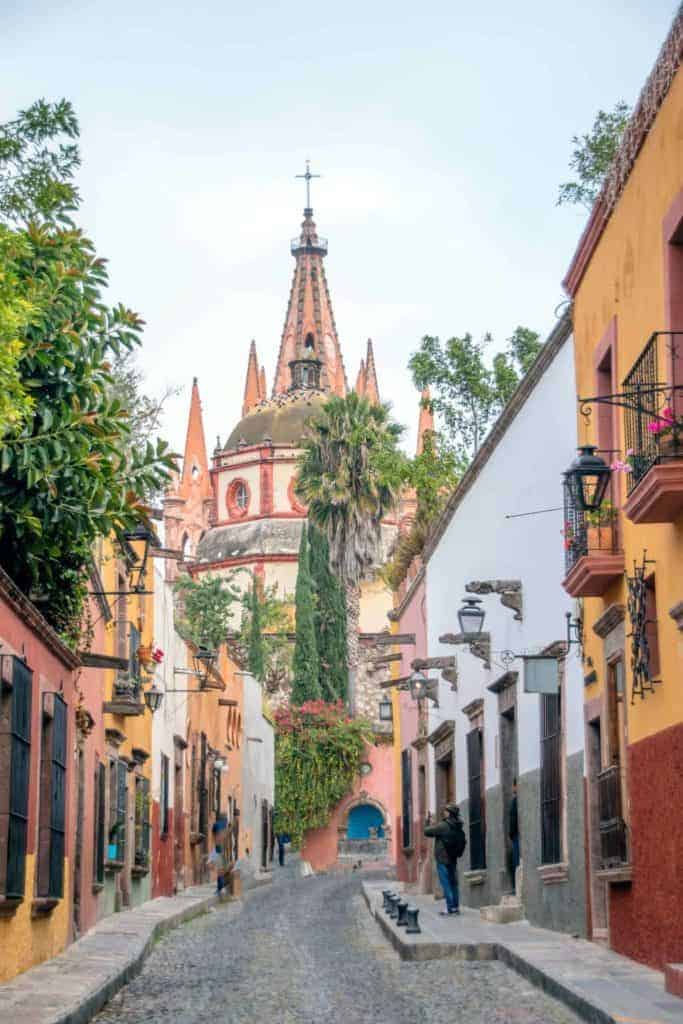
San Miguel de Allende
San Miguel de Allende is a charming town in the state of Guanajuato. It has temperate weather year-round, a great art scene, and plenty of restaurants and cafes. This city is popular not only amongst American expats but highly sought after by Europeans and wealthy Mexicans. You can walk almost everywhere in San Miguel because it is small enough to do so.
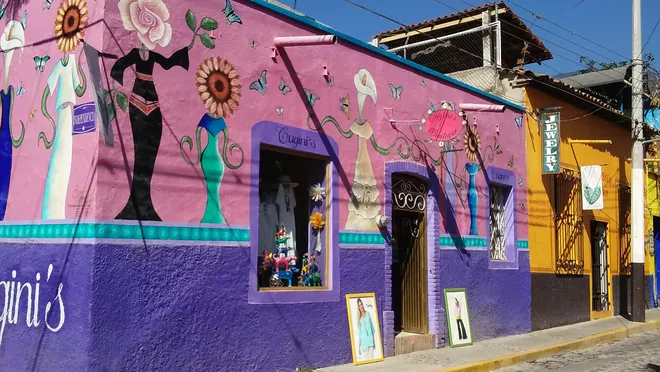
Lake Chapala and Ajijic
Ajijic and Chapala are probably the most popular expat destinations with American retirees.
Ajijic, in the state of Jalisco, has grown into one of the most popular retiree havens in the world. This area has very temperate weather year-round and a beautiful large lake. There are also plenty of hot springs nearby.
In Ajijic, you will find a lot of different expat groups, and English is widely spoken. So making new friends won’t be hard at all! One of the biggest benefits of Ajijic is also how walkable it is. Having a car isn’t necessary if you don’t want one. This quiet and small town continues to grow.
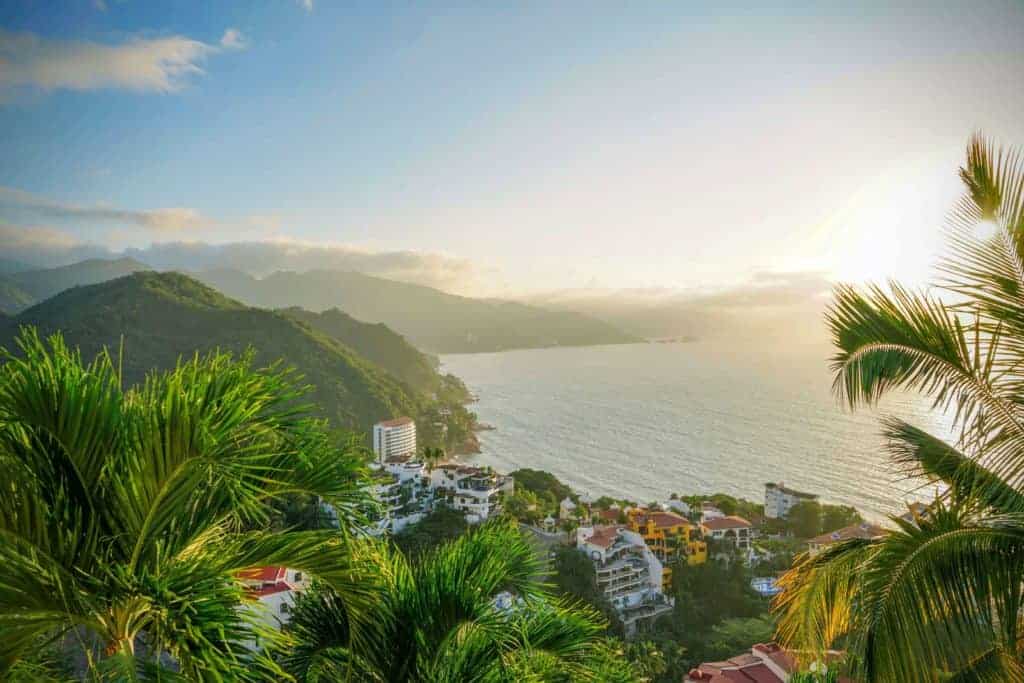
Puerto Vallarta
Puerto Vallarta, in the state of Jalisco, is a little piece of heaven by the beach. Puerto Vallarta has been very popular with travelers from the U.S. since the 60s, and as a result, the expat scene in this city has grown significantly. Puerto Vallarta is surrounded by some large hills, which give this town a beautiful backdrop!
In Vallarta, you will find foreigners of all ages- digital nomads, retirees, and everything in between. For a delightful stay, consider exploring the region’s all-inclusive resorts, providing a perfect blend of comfort and relaxation.
Merida
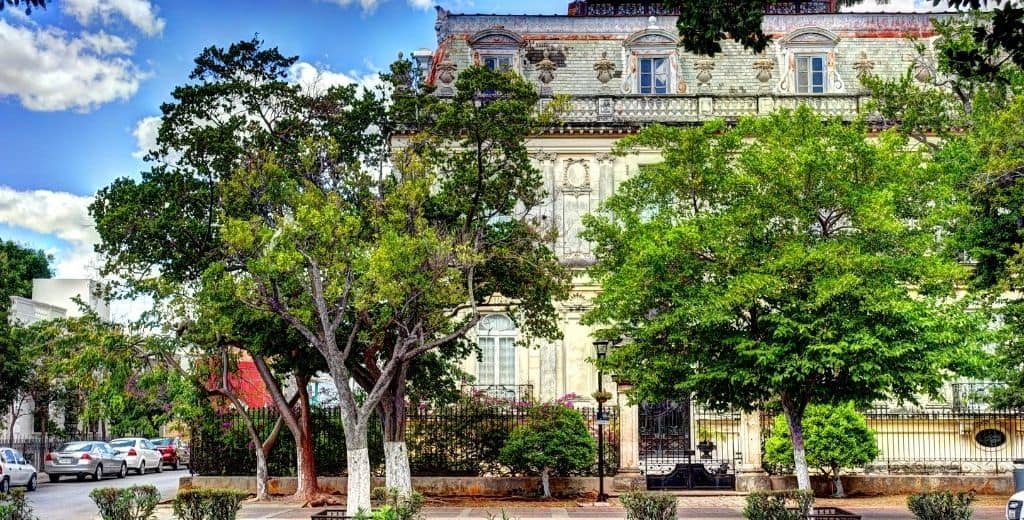
Merida, in the state of Yucatan, is known as the “safest” city in Mexico by various studies. The low cost of living, the calmness of the city, and the kindness of the people are what draw thousands of expats to this colonial city in the South. Merida has a tropical and hot climate so if you like sun and heat, Merida is the place for you!
Riviera Maya
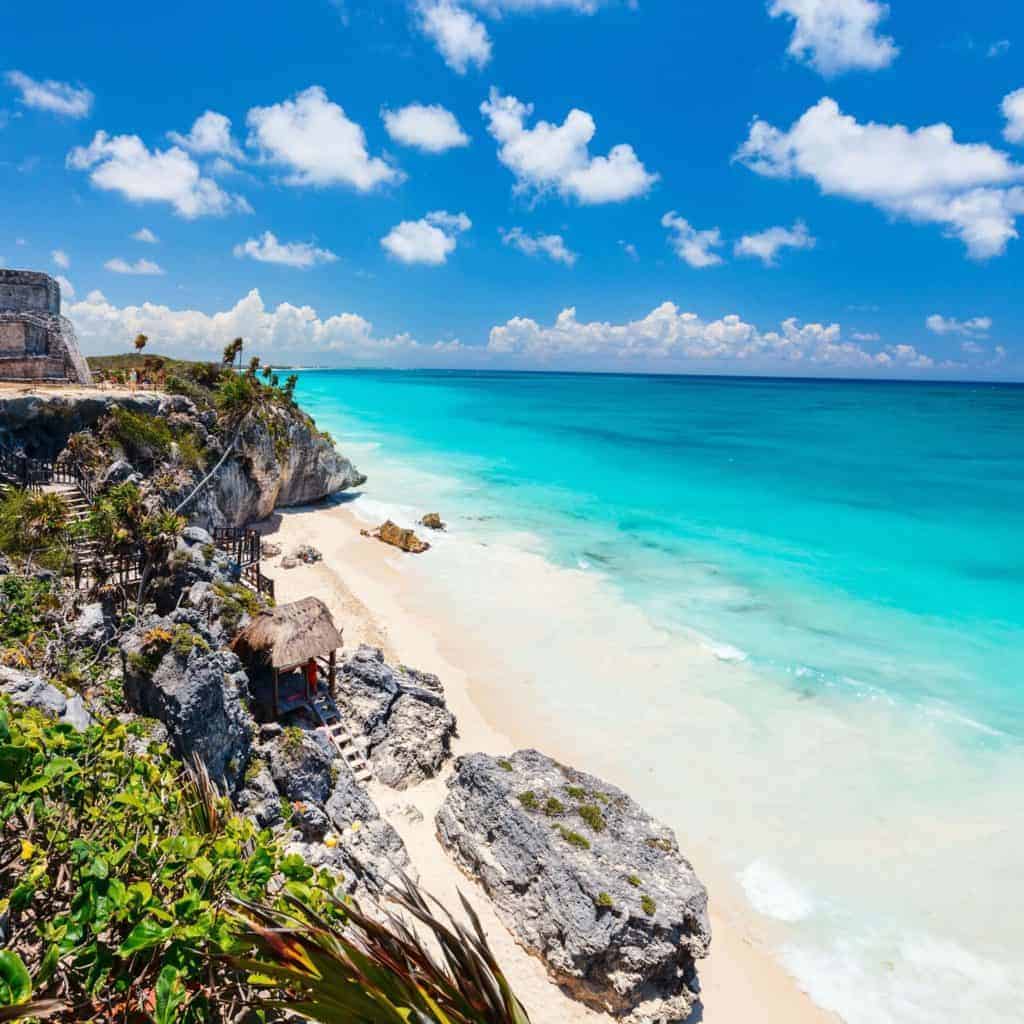
The Riviera Maya consists of cities like Tulum, Playa Del Carmen, Cancun, Akumal, Puerto Morelos, and Cozumel. All are very attractive expat cities with turquoise water and white sands. These beaches are famous for being some of the most beautiful in Mexico and in the world. There is incredible biodiversity in the Riviera Maya, and if you like the outdoors, this place is great for you!
Another benefit of living in the Riviera Maya is the amount of English spoken by the locals because it is a large international tourist hub.
Ensenada
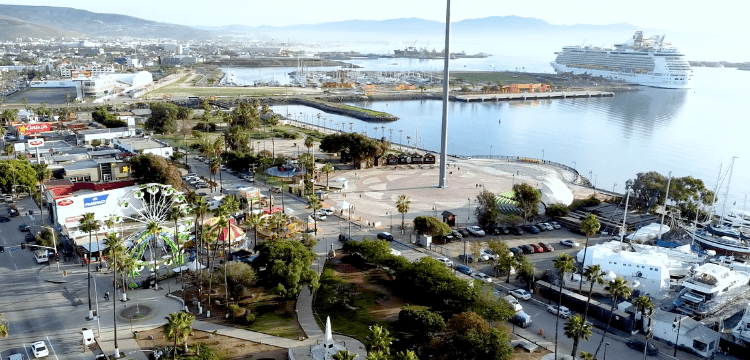
Ensenada in Baja California is one of the most popular expat cities for people who like to be close to the United States. Ensenada has a semi-arid climate which is perfect for winemaking. If you find yourself loving the weather in San Diego, CA, and love wine, then Ensenada is a place for you!
If you have allergies or need to be in a Mediterranean type of climate for health reasons, you can’t go wrong with Ensenada. Plus, you’re only 2 hours away from San Diego.
Rosarito
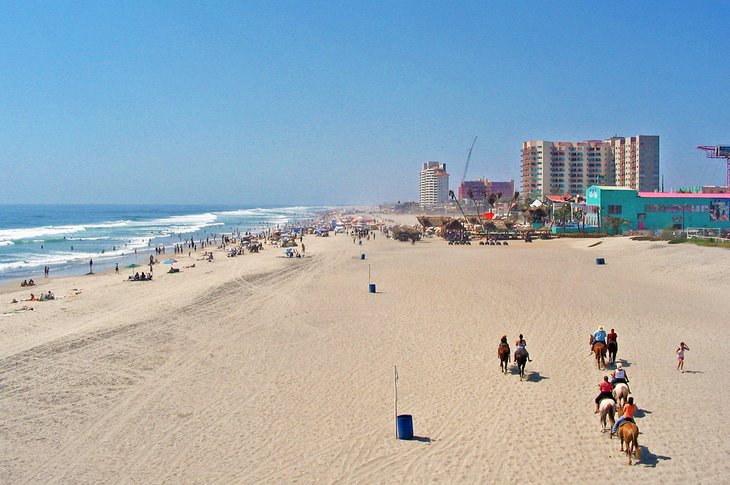
Only 1 hour away from San Diego, California, is the beach town of Rosarito. Rosarito is a popular resort town on the coast of the Baja Peninsula in Mexico. Rosarito’s beaches are known amongst surfers.
Even though Rosarito is only an hour away from the U.S. it is still very much a Mexican town. Much of its charm and air remains very authentic. In Rosarito, there is a wide availability of fresh seafood and amazing food all around. And if the outdoors is your thing, you’ll never run out of activities in this coastal town.
Mazatlan
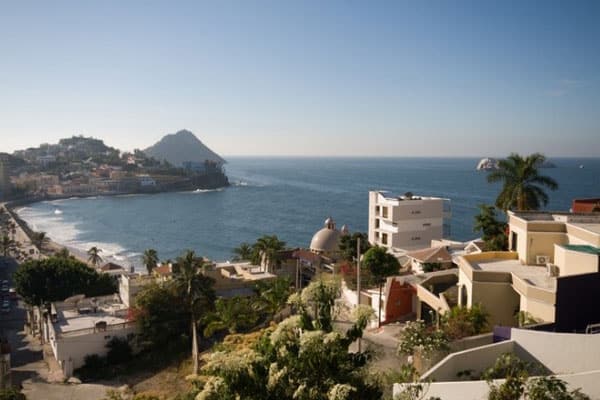
Mazatlan in the Northern state of Sinaloa is a nice Mexican resort town that is known for its big sea fishing. So if you like to fish, bring out the bait in Mazatlan! This beach town has a lively nightlife and bar scene along with a varied art scene.
Mazatlan is not only a very safe city but attracts thousands of tourists every year making it a popular beach city in Mexico. The cost of living in Mazatlan is very low compared to other beach cities like Playa del Carmen or Tulum. The weather is semi-arid and mostly warm year-round with low humidity.
Oaxaca
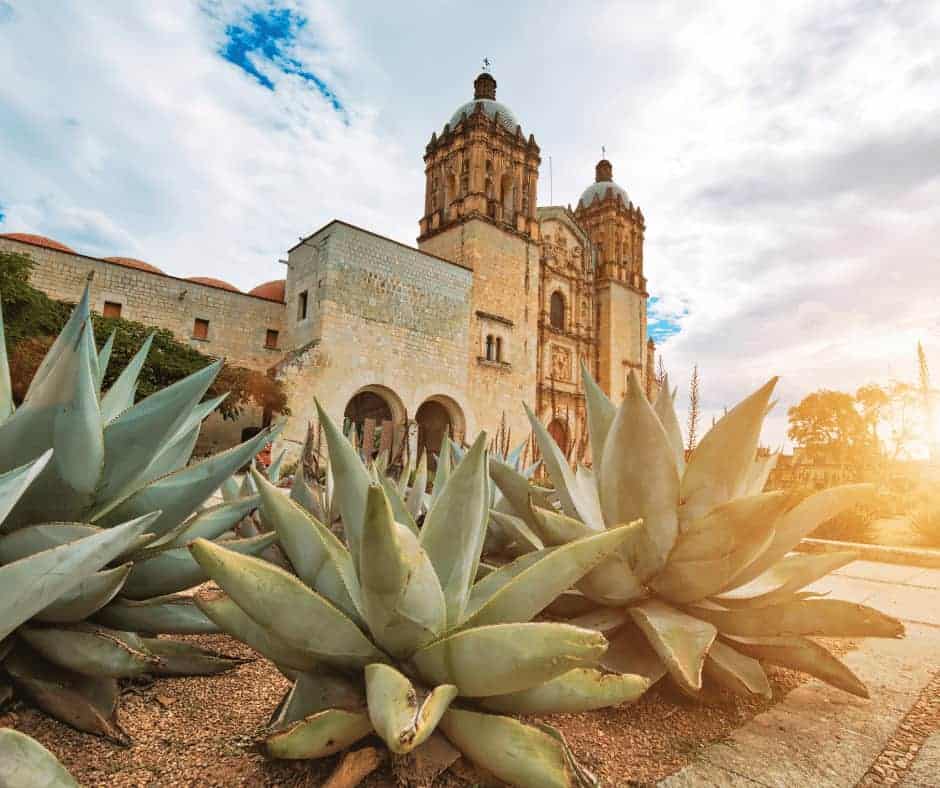
Oaxaca City in the diverse state of Oaxaca is one of the most “authentic” Mexican cities in the country! Known as the land of the 7 moles, Oaxaca is not only known for its food but also known for its rich culture.
There are several languages spoken in Oaxaca from all the different indigenous tribes that have lived in this area since pre-Hispanic times. Oaxaca’s climate is warm in the summer and temperate in the winter. There are some magnificent ruins nearby and plenty of festivals throughout the year. Plus, if you’ve always wanted to try Mezcal, this is where they make it!
Huatulco
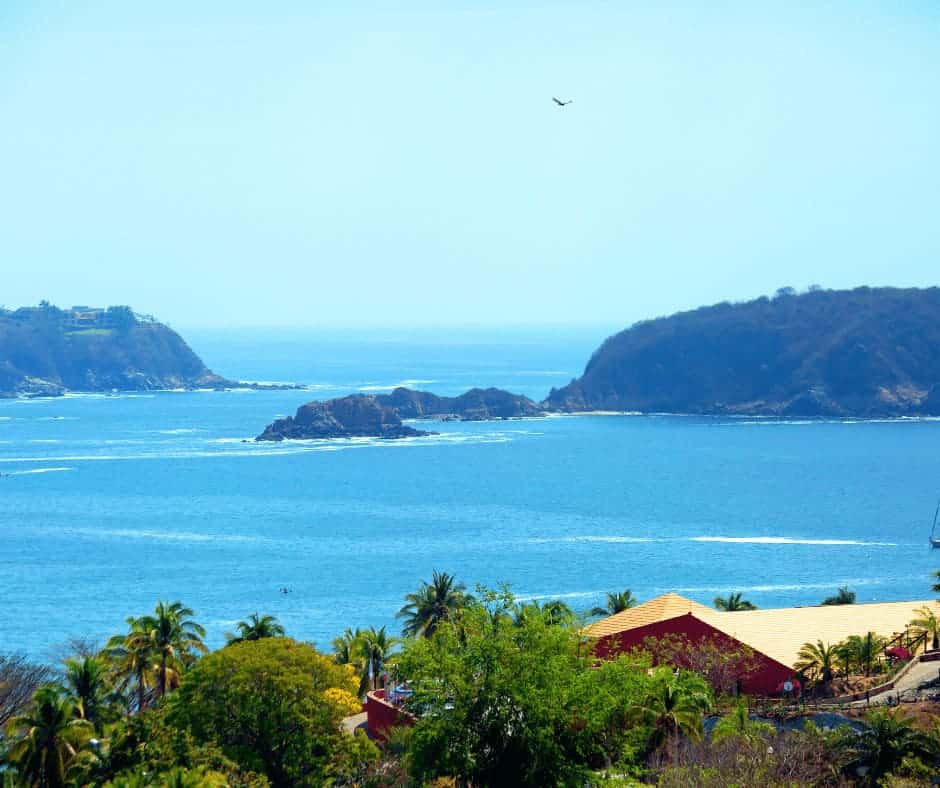
Huatulco in the state of Oaxaca isn’t as popular as other beach cities in Mexico in terms of expat concentration.
However, it recently started getting a lot of attention from Canadian retirees who are trying to escape the harsh winters up north. Sitting on the Pacific Ocean, it is surrounded by 9 different bays. Huatulco’s weather is warm year-round, with the highest humidity occurring in the summer months.
Where Should You Live in Mexico?
But even after reading our recommendations of the best places to live in Mexico, nothing will replace YOUR experience and YOUR wants and needs. And if you give someone a list of your wants, you’re going to get hundreds of different answers from hundreds of different people who’ll ALL say THEY live in the best place in Mexico. And they’ll ALL be correct. Because, they chose the best place that fits THEIR own personal needs & wants.
Mexico is a HUGE and geographically diverse country. Each area offers its own pros & cons. The decision for you will be which area of Mexico will best meet YOUR own personal needs & wants. So you should ask yourself:
1. Do you want to live in a large city or a smaller town?
2. Do you want to be near other English-speaking expats or do you want to “go native” and live among more locals who only speak Spanish?
3. Do you need to live near an international airport with many direct flights to the U.S. and Canada?
4. Do you need to have close & easy access to great medical facilities?
5. Do you prefer a hot & humid climate (like on the coasts) or do you prefer a more temperate year round climate (like in the central mountains)?
6. How important is the availability of fast & reliable Internet service?
7. Do you want to live in a town/city with lots of entertainment, restaurants, bars, and music venues or do you want a more “laid back” lifestyle?
8. Do you want to live where you can walk everywhere (or use public transportation) or will you want to have your own car?
9. Do you need good quality schools for your children?
10. What is there to do for fun? How will you spend your free time?
Once you make these decisions (always START with your preferred climate FIRST.)
You’ll be able to narrow down your choices. Then go visit the places that meet your personal criteria. And visit these places at different times of the year to experience the full range of weather (the beaches are always nice December thru March, and the mountainous cities are always pleasant in the summer).
Then, talk to the people in each area about what it’s like to live there on a daily basis (the reliability of electricity, the noise, the quality of the drinking water, the safety, mail delivery, fast & reliable Internet, trash pickup, easy access to doctors/dentists/hospitals, shopping options, etc.)
Remember, “vacationing” somewhere is NOT the same as “living” there. ![]()
Once you have narrowed down your list to 2-3 top contenders, we help you get a boots on the ground tour of what living in those cities is truly like. So, consider booking a private relocation tour. Our local tour guides don’t sell real estate, so they have zero financial incentive to steer you into one neighborhood vs another. That means you’ll get honest, no-pressure advice and see neighborhoods that aren’t part of some sales pitch.
Real Estate & Rentals
Rentals In Mexico
Many rentals are cheaper than a lot of mortgages in Mexico and oftentimes much nicer for a lower price.
Rent before you buy! Why?
FLEXIBILITY
It’s much easier to leave a rental in Mexico than sell a house if you don’t like the neighborhood or the city you’re in. And always look at a rental in person before renting it sight unseen!
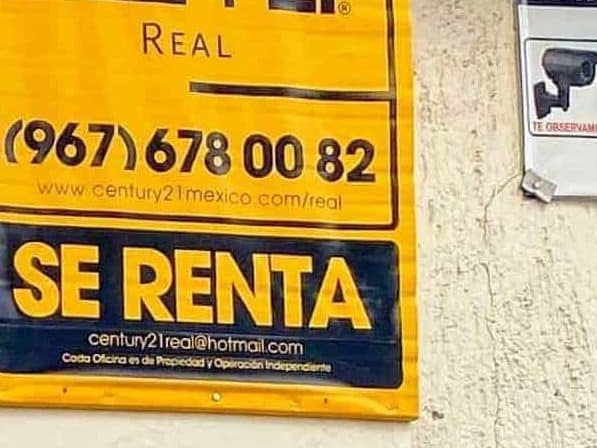
In fact, many rentals online may have misleading pictures and may look totally different in person. Don’t fall into the trap of assuming the picture is up to date even if the price seems to be too good to be true.
Even though there is a rise in rental listing websites like Vivanuncions.com.mx and Inmbuebles24, these still aren’t fully adopted platforms in Mexico.
A lot of great rentals in Mexico aren’t posted anywhere online. To find a rental in Mexico, I highly recommend using word of mouth first. When you meet people, let them know you are looking for a rental. When you walk around a neighborhood, look for signs on windows that say “se renta” or “se alquila” and send a message to the phone number listed through WhatsApp. (Like the example in the image)
If you end up renting a house or apartment through a realtor, make sure you are using a reputable one. There are plenty of horror stories out there from expats who moved to Mexico, gave a realtor a deposit for a place, and never saw the keys to their rental. There are plenty of fraudulent and dishonest people out there, so make sure you only work with a vetted and honest realtor who will have your best interest in mind.
Buying Real Estate
When it comes to owning property or land in Mexico, you should know that as a foreigner, you don’t always have the same rights as a Mexican national. For example, if you plan to buy beachfront property or real estate near a border as a foreigner, you have to buy it under a special type of bank trust.
That doesn’t mean you cannot buy property in Mexico as a foreigner. You’ll have to buy it under a Fideicomiso, which a real estate attorney can help you with.
I want to caution you about buying real estate without hiring the right “notario” or Notary. Many expats who have done this end up losing their properties or a lot of money in a Mexican court fighting for their property because they didn’t know their property did not have a clean title. It’s also important that you have a will or “testamento” in Mexico, which can save you years in probate court.
Mexico doesn’t have a multiple listing system (MLS) like you might be used to in the U.S. and Canada. Therefore, knowing what is a “fair price” to pay for a property can be a challenge. Most real estate companies are only aware of the price of the houses they manage and have in their inventory but aren’t aware of ALL the closings in one particular area. That’s why it’s important to hire a reputable real estate company with various listings who knows the area very well and gives you a fair analysis of the real estate market in that area.
Even then, it would be best if you still did your own research before ever buying real estate in Mexico. Walk the neighborhoods, talk to locals and neighbors, and check the listings online for various real estate companies. You can find an excellent deal through word of mouth! Don’t underestimate it.
When you are ready to purchase land or property in Mexico, make sure you hire a real estate attorney to verify the land is not subject to being ejido and a reputable Notario that can draw up a contract and make sure you legally own the property by Mexican court standards.
Please make sure you talk with an expert in this kind of ownership before moving forward with a purchase!
Get a list of our recommended realtors and notaries throughout Mexico in our Complete Mexico Relocation Guide
Property Taxes in Mexico
Property taxes in Mexico are extremely low. Many people pay less than $300 USD A YEAR! And no, that is not a typo.
The cost of your real estate taxes in Mexico will depend on the age of the property, the location, and of course, the size of the property. Your taxes go to SAT Servicio de Administración Tributaria.
Real Estate Taxes are paid annually, but you get a substantial discount if you pay your property taxes before the end of the year. Some municipalities give you up to 50% off if you pay in January.
Renting out a property you own in Mexico is considered an income source. Therefore you are subject to paying IVA impuesto sobre el valor añadido.
And if you sell a property in Mexico, you are responsible for paying capital gains. UNLESS you are a temporary or permanent resident! Becoming a resident of Mexico has its benefits.
Before you buy real estate in Mexico, I highly suggest you rent for 6 months to a year in the area and fully assess if this is the right place for you to call your home. The rental process is much easier than buying a property; it requires a lot less money upfront, and you have the flexibility to move to another area if you don’t like where you live. Selling a house in Mexico isn’t as easy as it is in the U.S. or Canada. If you don’t have a good real estate agent, and if it’s not priced to sell, it could sit on the market for years.
Currency & Banking
Wondering which banks we recommend in Mexico? Want to know how to open a Mexican bank account? Our Complete Mexico Relocation Guide gives you an easy-to-follow plan.
The official currency in Mexico is the Mexican Peso.

The exchange rate fluctuates throughout the year, so giving you an estimated exchange rate would be pointless as this changes daily. To give you an idea, the exchange rate from 1 USD to Mexican Pesos this morning was $20.50 MXN. A few weeks later exchange rate was $18 MXN.
There are platforms like XE that update exchange rates by the minute to give you the most accurate information. And depending on who your bank is, you might be able to get this information online with them as well.
There are both bills and coins in Mexico. Whole numbers are known as pesos, and cents are known as centavos.
The following are currency denominations for pesos:
- 1,000 Pesos
- 500 Pesos
- 200 Pesos
- 100 Pesos
- 50 Pesos
- 20 Pesos
- 10 Pesos (coin)
- 5 Pesos (coin)
- 2 Pesos (coin)
- 1 Peso (coin)
The following are currency denominations for centavos:
- 50 centavos
- 20 centavos
- 10 centavos
Getting Around in Mexico
Walking
If you’re solely looking at getting around inside a city, I highly recommend walking around. Some parts of your city are better explored on foot, scooters, or bikes than driving.
Especially beach towns like Huatulco, Tulum, Playa del Carmen, and Puerto Vallarta, which have a large population of scooters, bicycles, and pedestrians.
Mexican cities usually have a mix of residential and commercial throughout the city. Unlike cities in the U.S., where the concentration of retail and business is usually in one pocket, in Mexico, you could be on the outskirts of town and still have plenty of conveniences within walking distance.
Unless you live in a very rural area where the concentration of businesses and retail is too far to get to on foot, I recommend walking a lot in Mexico. It could be easier at times than navigating street signs or other traffic.
Plus, you’ll get good exercise!
City Buses
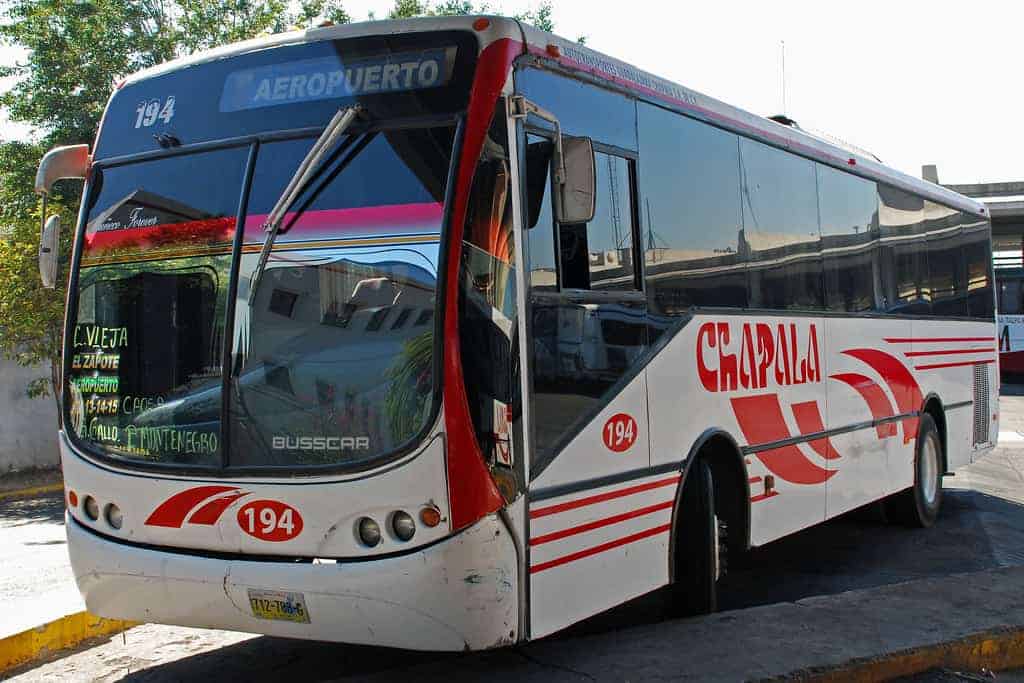
City buses are usually run by the local government and have set schedules. They are a great way of transportation when you need to travel a longer distance within the city or town. However, not every city has a local bus. Many smaller cities use colectivos which I cover below.
Although they usually have a set schedule, it can be challenging to find any information about this online. Asking the bus driver could be your best bet for knowing what times the bus runs. I have always found that asking people on the street is the best way to hop on the right bus. Another reason to practice your Spanish!
However, most local buses don’t have any formal timetable and route. So it’s best to ask neighbors or confirm your route with the bus driver before jumping in.
In most big cities like Guadalajara, Monterrey, and Mexico City (CDMX) there is a rapid transit system. They have their lanes and are mostly used as commuter buses within the city. The Metrobus should have a set schedule, and timetables are available online. Fares are usually around 5-6 pesos ($0.20- $0.30 USD) each way.
Colectivos
A colectivo is typically a large van or small bus that takes a crowd of people in a local community from one part of town to the next. In some places, they are known as micro, combi, or peseros. It’s also important that you know most of these buses are not run by the city or government. They are independently owned and operated and may differ in fees, schedules, routes, and vehicle types.
They often make a few stops throughout their journey and will usually pack as many people in them as possible. If you aren’t in a hurry and don’t mind waiting for the colectivo to stop a few times along the way, then this is a great alternative to a taxi ride. They cost anywhere from $2-$5 pesos per ride! (~10-25 cents USD) It’s very affordable and a great way to get around town if you don’t have a car.
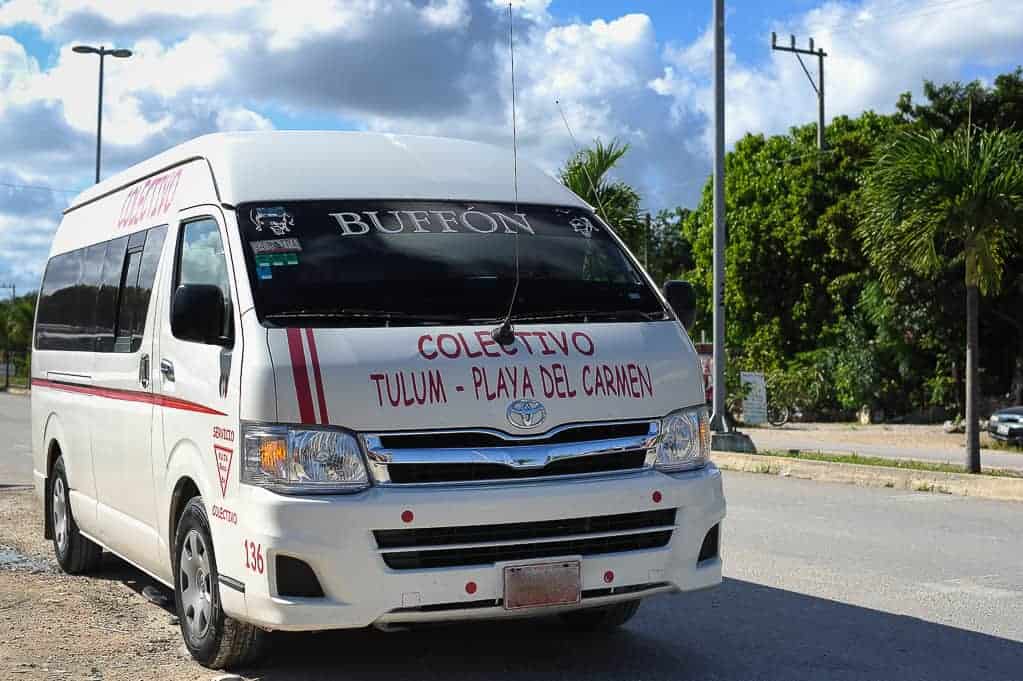
Long Distance Buses
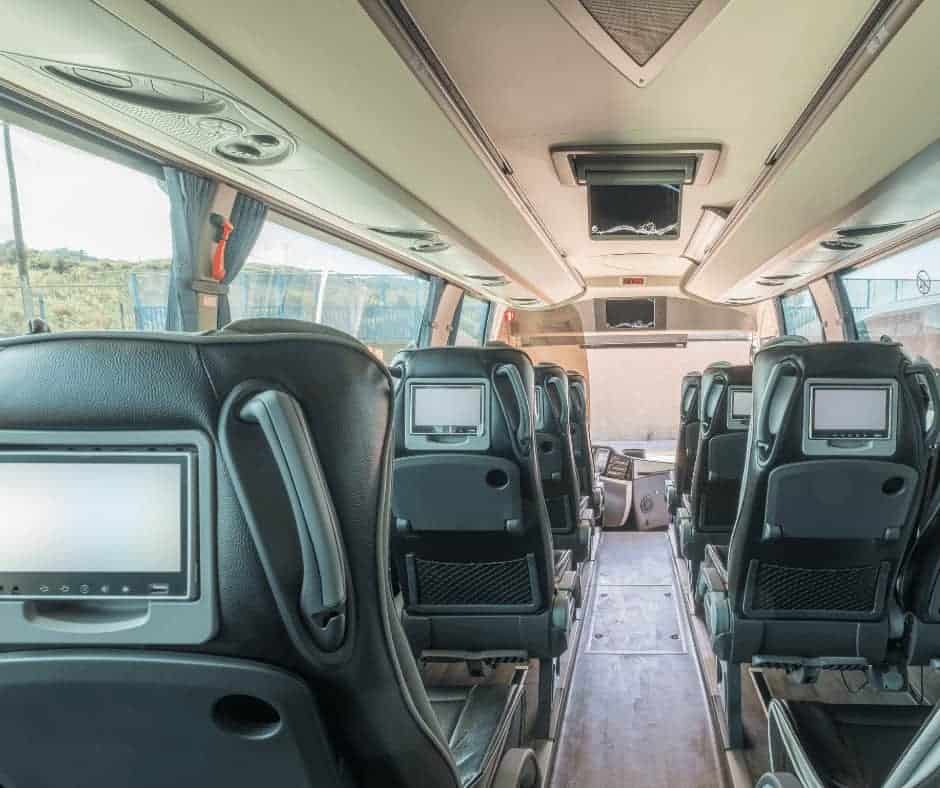
Many Mexican families don’t have a car, so traveling to visit other cities is usually done by long-distance bus. They range in all sizes, amenities, and direct vs. frequent stops.
Traveling by coach bus in Mexico is inexpensive, safe, and very comfortable. Some of the popular companies are ADO, ETN, and Turistar. These buses are incredibly comfortable and have modern amenities like:
- Full Bathrooms Onboard
- Personal TVs with Movies on Demand
- Air conditioning
- Fully Reclining Seats
- WiFi
- And Plenty Of Overhead Storage
Coach buses in Mexico have their timetables online, and fares are based on the type of bus, distance, and number of stops. Direct buses are usually more expensive, but you can travel without having to worry about taking your car and enjoying movies along the way. It’s especially great if you don’t know the lay of the land yet.
Taxis
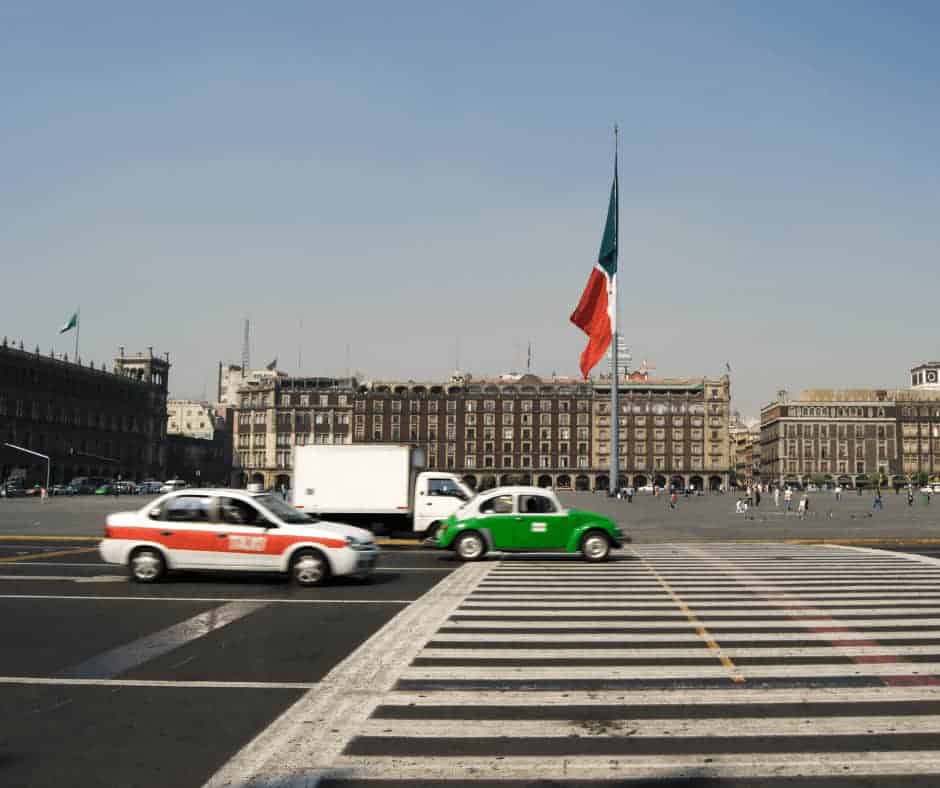
In most cities, you should avoid hailing a taxi off the street out of caution. Not all taxis marked as “taxi” in Mexico are registered, so you could be at risk of getting ripped off, or worse, robbed.
Registered taxis in Mexico are a very reliable way of getting from one point to another. To avoid any surprises, you should ask the driver for confirmation of your fare based on where you are headed.
To get a reliable and safe taxi in Mexico, you should only get one from a “Sitio,” a dedicated stand of taxi dispatchers. And if this doesn’t exist near you, you can call a radio taxi. You can usually find the phone number of a radio taxi through hotels, restaurants, or in some cases, online.
Be prepared to pay in cash as most taxis that I know of in Mexico only accept cash as payment. And be prepared to have exact change as most taxi drivers don’t carry change with them or pretend not to keep a larger bill.
Once you have established a relationship with a taxi driver, it is common to receive their direct number to arrange future pickups, even as a long-distance private driver.
Uber and Didi
The growing popularity of ride-sharing services like Uber and Didi has made it easier for people who don’t carry cash to call for a ride. Not only is this method safe and reliable, but more recently has been more popular in terms of service and sanitation.
The only watch out for ride-sharing services is they aren’t usually allowed to pick you up at airports in Mexico. Therefore you will have to call a cab from a sitio or figure out some form of public transportation when you arrive at an airport.
Otherwise, they are a reliable and safe alternative to taxis. However, Ubers and Didis tend to be a bit more expensive than Taxis.
Uber is usually a cashless ride-share service, whereas Didi is often paid in cash.
Subway/ Metro
Major cities like Monterrey, Guadalajara, and Ciudad de Mexico have rapid transit metro systems. By far, the largest and the most routes are in Mexico City. Aside from the NYC subway system, Mexico City’s metro system is the largest in North America.
In Monterrey and Guadalajara, the light rail system connects the outskirts with the city center and doesn’t have as many lines to connect parts of the city.
Driving Your Own Car
Driving your car in Mexico will give you the most freedom to go wherever you want, whenever you want. However, it’s important to note a few important details to ensure you are doing so legally.
- You MUST carry Mexican auto insurance- VERY IMPORTANT.
- You can drive a foreign-plated vehicle as a tourist for up to 180 days.
- You Can Drive A Foreign Plated Vehicle as A Temporary Resident for the length of your residency visa.
- You Must Have A Temporary Import Permit (TIP) On A Foreign Plated Car.
- You CANNOT Drive A foreign-plated vehicle as A Permanent Resident. Unless you live in the Free Zone- Baja California, Baja California Sur, Parts of Sonora, Parts of Tamaulipas
- Have A Valid U.S. Canadian, or European Driver’s License.
There are usually two types of highways in Mexico; The free one “la libre” and the paid one “la cuota.”
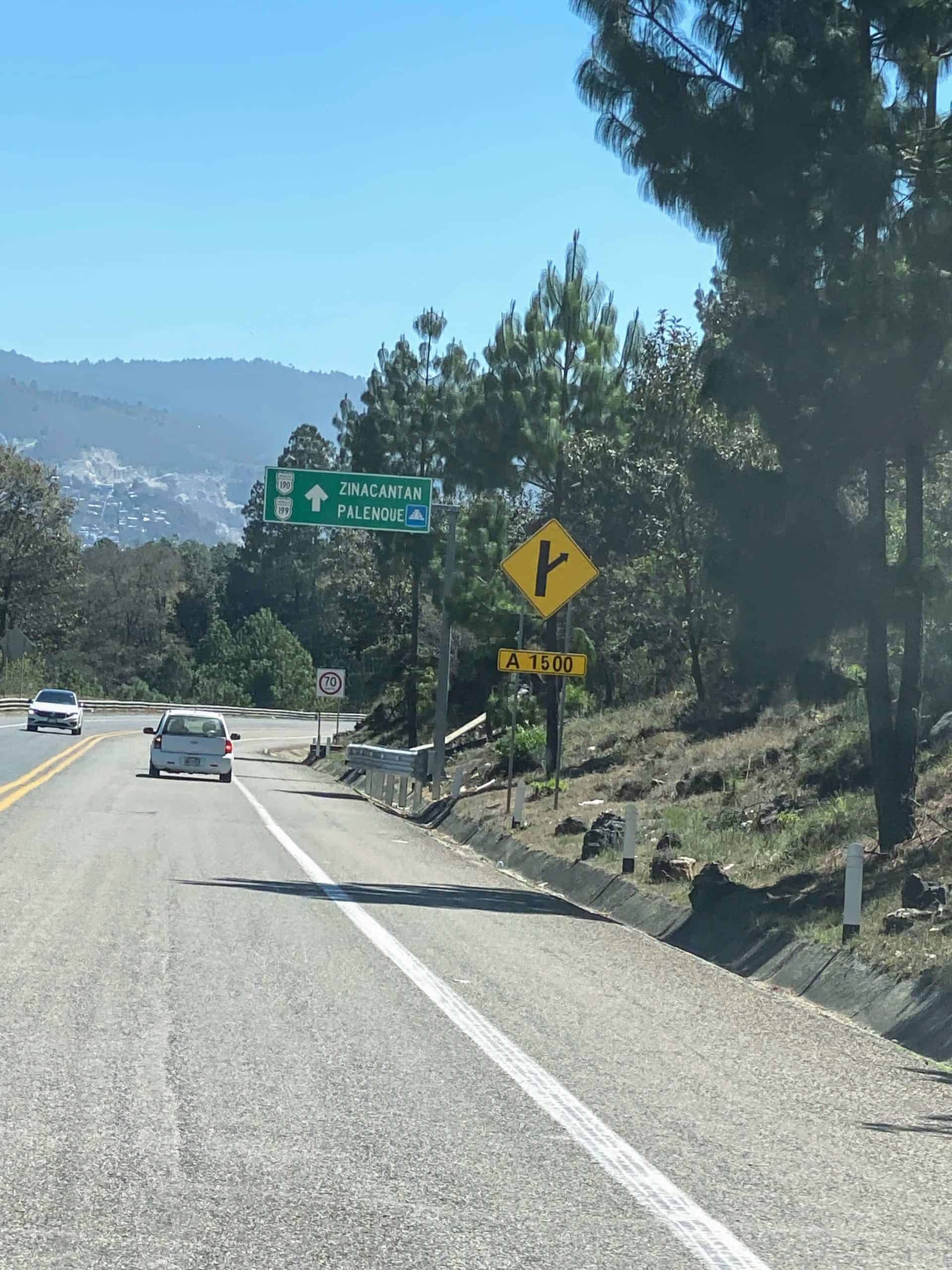
Additional Reading:
Working in Mexico
Not everyone moves to Mexico with a cushy pension or social security check. And not everyone moves to Mexico with a huge “cash balance” in their bank account to live off on.
If you need to fund your new life in Mexico or just want to earn a little extra money to do some traveling or other fun things, there are options for you!
If you come to Mexico on a tourist visa, also known as an FMM, you should know you CANNOT work in Mexico legally.
Sure, there might be places that can hire you and pay you cash under the table. However, you need to know that working without a work permit means breaking the law in Mexico and can affect you in the future if you plan on getting residency.
Don’t Do It!
Luckily, getting a residency visa is so easy and straightforward that there should be little reason for you to work in Mexico illegally.
You Need A Residency Visa To Work in Mexico
Most people coming to Mexico and looking for work will need a residency visa to be eligible to work in Mexico. The type of visa you have will dictate whether you must apply for a work permit.
If you have a temporary visa, work permission is not implied and your employer will need to apply for a work permit through INM Instituto Nacional de Migración (Mexico’s Immigration Authority.)
Otherwise, if you have a permanent visa, work permission is implied. Although you are still liable to notify INM of the change of employment status as a permanent resident.
There are a few specific exclusions that allow foreigners the right to work without having to apply for a work permit. If you believe you have this right, you should consult with an immigration attorney or facilitator first.
Finding A Job In Mexico
And by law, Mexican companies must first make sure they can’t fill the job they offer you by a Mexican national. That can be your biggest obstacle.
Depending on your skills and eligibility, you may be able to find jobs in some of the popular categories for expats:
- Teaching English As A Second Language
- Teaching English Online
- Answering Calls In English At A Call Center
- Selling Time-Shares At 100% Commission
- Sales Positions At Real Estate Companies Catered to English Customers
- Roles That Require You To Be Bilingual (Spanish/English)
You should know that Mexico’s minimum wage is about $278.80 MXN A DAY (That’s about $14 USD A DAY!) It may not be enough for you to live comfortably. However, interestingly enough, most Mexican households of 4, get by on $20,000-30,0000 MXN/Month! (about $1,000-1500 USD/month)
The type of jobs you might find in Mexico will depend on your experience, skills, and, of course, your salary requirements. In Mexico, finding a job can be a challenge regardless of whether you are a national or a foreigner.
The more experience you have in a specific industry, the more likely you are to find a job in this sector. The exception is certain professional jobs like doctors, accountants, and architects which are reserved for Mexican nationals only.
For most of you though, having a work permit is necessary for Mexico if you plan to accept money for a service or transaction in Mexico.
Money-Making Ideas in Mexico
Getting a job might be a challenge in Mexico and, in some cases, impossible. But Mexico is a developing country full of untouched opportunities you can capitalize on.
If you can’t find a job, why not make your own income opportunity?
I’ve seen people creatively come up with services based on their community and the current state of affairs. During the pandemic, I’ve seen neighbors and other acquaintances offer grocery delivery and other favors for a fee in the most rural areas.
I’ve heard of people starting their own pet-sitting service through word of mouth, and in a few months, they had a full-blown business taking care of other people’s pets!
I know plenty of expats who have blogs, YouTube channels, and other internet businesses that make them a few extra dollars on the side. In some cases, some of these online businesses are fully replacing their income!
I know people who rent some of the rooms in their houses on Airbnb and make a nice profit each month without having to sacrifice their time and effort.
I know a few expats who have written an e-book on a subject they are passionate about, are selling it on Amazon Kindle, and are bringing in an extra few hundred each month. And the best part is they have zero inventory at home and can run this business from anywhere!
The possibilities are endless!
Residency Visa Options
Mexico does a really good job of making it easy for foreigners to apply for and receive a resident visa. The process is not difficult, and in most cases, expats choose to do the process from beginning to end on their own.
Of course, this all depends on your Spanish comprehension, your time, and any other special circumstances. However, hiring an immigration consultant or attorney is usually very inexpensive and saves you a lot of trouble and time!
Most expats moving to Mexico from the U.S., Canada, or Europe will need to start the process of applying for any residency visa in their home country. Unless you have family ties to a Mexican national by marriage or by birth, the process is usually done in a Mexican consulate near your home.
Skip the headaches, the wasted time, and the wasted money — use one of our recommended Mexico immigration lawyers or facilitators. You get instant access to our directory of vetted contacts when you purchase the Complete Mexico Relocation Guide.
Temporary Visa (Visa Temporal)
Most applicants will get a one-year visa initially and be eligible to renew it for up to 3 more years. After this, you will either have to start over or become a permanent resident. If you receive your residency through marriage to a Mexican national, you will get a 2-year temporary residency. After this, you can apply for permanent residency.
Each consulate is supposed to use the same formulas, which I share with you below. However, all consulates have a level of autonomy and may have discrepancies in their requirements either because they don’t use the same exchange rates because of the current minimum wage in Mexico or something else.
Solvency Requirements for Mexican Temporary Residency
For temporary residency, the following formula is used, and we have an approximate amount in USD based on an exchange rate of 20 MXN to 1USD.
Monthly Income Requirement
- Formula: 300 x daily minimum wage
- Total in USD: Approximately $4,083 + USD per month
Savings Requirement
- Formula: 5,000 x daily minimum wage
- Total in USD: Approximately $68,066 USD
These are NET income requirements. All income minus taxes.
**Keep in mind each Mexican Consulate has its own income requirements and may vary from these baselines**
Benefits of a Temporary Visa:
- Eligible to apply for a work permit
- Eligible to get a Mexican driver’s license
- Ability to import a foreign plated vehicle (up to 4 years)
- Ease of opening a Mexican bank account
- Eligible for Private Health Insurance by Mexican carriers
Permanent Visa (Visa Permanente)
If you plan on living in Mexico longer than 4 years, you are retired, and you qualify- you should apply for a permanent resident visa.
Many people choose to apply for a permanent resident visa because their income qualifies them, they are over 60, and they would rather not have to deal with immigration for renewal. Your permanent resident visa is valid indefinitely.
And after 5 years, you are eligible to apply for citizenship. To qualify for permanent residency some consulates require that you be over 60 and are receiving a pension or social security.
For permanent residency in Mexico, the economic solvency requirements are typically higher. Using a daily minimum wage of 278.80 MXN and an exchange rate of 20 MXN/ 1 USD, here are the updated totals:
Solvency Requirements for Mexican Permanent Residency
For permanent residency in Mexico, the economic solvency requirements are typically higher. Using a daily minimum wage of 278.80 MXN and an exchange rate of 20 MXN/ 1 USD, here are the updated totals:
Monthly Income Requirement
- Formula: 500 x daily minimum wage
- Total in USD: Approximately $6,806 + USD per month
Savings Requirement
- Formula: 20,000 x daily minimum wage
- Total in USD: Approximately $272,270 + USD
The income requirements vary by consulate and are NET (after taxes).
**Keep in mind each Mexican Consulate has its own income requirements and may vary from these baselines. Consult with your immigration facilitator**
Married couples have different criteria to be eligible. However, it is usually a small change in the income requirements for a family.
Benefits of a Permanent Visa:
- Work permit implied- simpler process to apply for jobs.
- Eligible to get a Mexican driver’s license
- Visa Is Valid Indefinitely. No need to renew
- Eligible for Citizenship After 5 Yrs
- Ease of opening a Mexican bank account
- Eligible for Private Health Insurance by Mexican carriers
- Discounted real estate taxes
Try a Mexico Relocation Tour
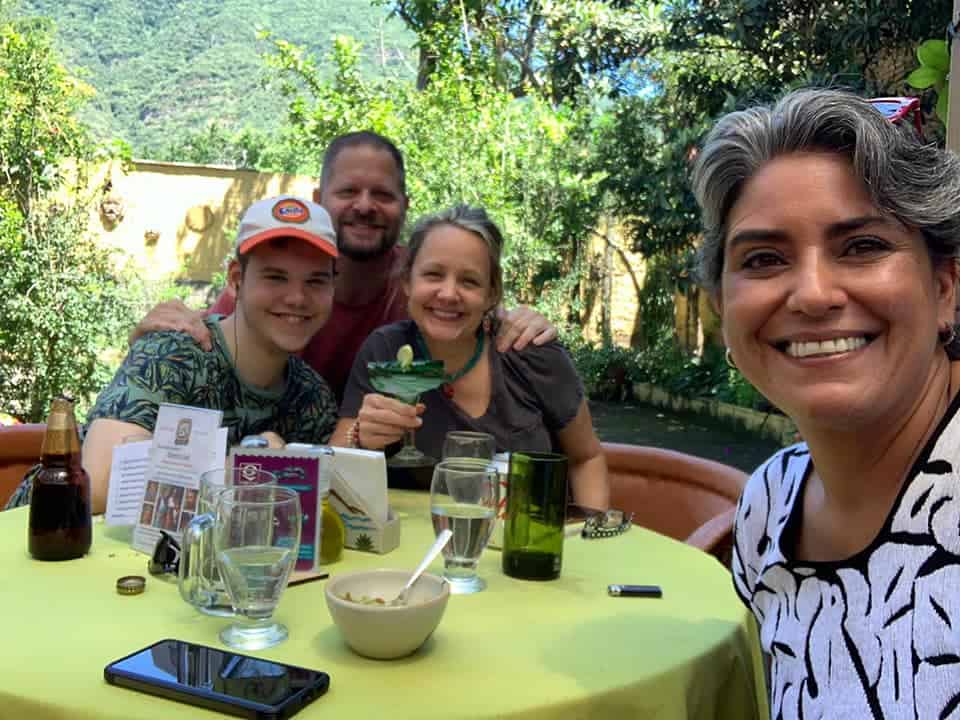
Did you know we offer Mexico relocation tours? You’ll get to actually experience what living in Mexico could be like. And no, you won’t sit in a conference room for hours a day. You’ll get an actual boots-on-the-ground tour!
If you think Mexico may be the perfect location for you to relocate to because you’ve read everything you could get your hands on, thoroughly researched the place, and feel like you even have a good idea of where in Mexico you want to settle – then you have some very important decisions ahead of you.
Go with your ‘gut’, pack your bags, and dive right in – that’s one option. Or, carefully collect all of the data you’ve been researching and verify what you’ve discovered so you KNOW you have made the right choice.
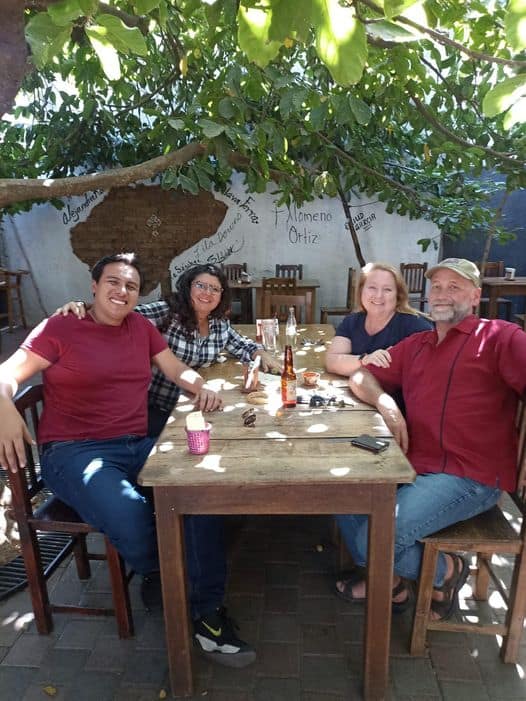
I’ve met and talked with hundreds of expats over the years who have done it both ways. Some jumped in feet first and were happy here, while others felt they had made a wrong decision and were long gone. Many took their time, got local guidance, and may be rented for a while before deciding to make Mexico their long-term home.
To book a relocation tour, all you have to do is buy our COMPLETE Mexico Relocation Guide- you’ll get instant access to our recommended relocation tour guides’ contact info.
Now, I’d like to share some of the reasoning behind these two methods and the real results.
Pros & Cons
Okay, let’s go over some reasons why someone might prefer to ‘Do it Yourself’ and why it may or may not be valid.
It’s cheaper to do it myself because I am on a tight budget.
First of all, it may not be cheaper to go it alone, especially in the long run. By the time you factor in renting a car, public transportation, lodging, and restaurants, you already have a good amount invested. You will most likely be paying top dollar for these items, whereas your tour guide can give you better local recommendations and will know the best restaurants that aren’t gringo-priced, meaning a better quality experience.
Once the tour begins, we’ll cover your tour guide’s fuel, ground transportation, and your tour guide’s time. You’ll just have to cover your meals and lodging- your tour guide can make some recommendations.
This will let you see as much as you can with a custom itinerary based on your preferences and rental budget, which will probably take quite a bit longer for you. This is because you don’t know the area.
You probably can’t get the same access to gated communities and condos to see what’s available unless you want a realtor with an agenda to show you around.
Your tour guide will have arranged access for you to several communities and condo developments, and there is no guilt in looking around or asking questions. It is totally relaxed, and nobody is pressuring you to sell. This makes for a much more pleasant experience.
Your tour guides are also familiar with other expats and locals (when applicable) who live in the area and can introduce you so you can start networking.
You will see a lot more in a shorter amount of time, thus saving money in the long run.
All of the information is available on the Internet.
There is no argument that the internet is crammed full of information. Maybe it’s really too much information? The problem is that some of the material you read online and in books may be very outdated or wrong.
Things are changing rapidly in Mexico since it is one of the fastest-growing economies in Latin America. Prices, deals, and what was working a few years ago, may not be true today. Much of what is printed online and in books about Mexico has been regurgitated over and over for years and hasn’t been fact-checked in years!
Another thing to watch out for is that quite a bit of what you read online is written by people or organizations with a hidden agenda. They have partnerships or affiliations with developers and other companies and will say just about anything to make Mexico paradise if it means they will be receiving a paycheck for your buy-in. This may not always be obvious, but the old adage “if it sounds too good, it probably is” should be at the top of your mind.
Why would a private relocation tour be a better option?
You can relax because we will not try to sell you anything during the tour, and I do not get kickbacks from any 3rd parties.
There is no hidden agenda with a Mexico Relocation Tour. When was the last time the author of that article you read online got in their car and drove around parts of Mexico to see firsthand what was going on?
Your tour guide personally lives in Mexico. They know firsthand what’s going on in the local economy. And they have no interest in making a sale from you. They’ll show you around, answer your questions about living in the area, and share their tips on how to avoid costly mistakes. Plus, the Mexico Relocation Online Guide gives you access to a directory of contacts that will help make your move to Mexico a smooth one.
You’ll get a fresh and current view of what’s happening in Mexico.
Never heard of a “relocation tour”. What is it, and why should you consider exploring Mexico with a relocation tour group?
A Mexico Relocation Tour is nothing like a tourist vacation to popular hotspots. The tours are specifically designed to show a potential expat what it would really be like to live in a specific part of Mexico. You visit supermarkets and different neighborhoods. Learn about hospitals and medical options in town. Talk with a local who lives in the town you’re touring to get insider tips. You will experience lunch in local spots.
Enjoy a meal with a local who has been living in Mexico for a while, and ask them the questions on your checklist. What are schools like? What do you do for entertainment? What are some unsafe neighborhoods to stay away from? When are the best deals for mercados (markets). Get answers to all your questions about living in Mexico.
Whatever you want to know before deciding to move, you now have personal friends and contacts with whom you can continue the conversation after you fly back home. You’ll get to instantly start making connections with locals who live in Mexico.
These are not realtors or authors of internet magazines who write articles with information designed to get you to buy real estate. These are people just like you and me who made a decision to move to Mexico and are happy to talk to you about their experiences in this new home.
You will have a Rolodex of professional contacts in Mexico to answer any further questions that may come up after you return home.
You don’t just see Mexico; you experience it!
To book a relocation tour, first, you have to purchase the COMPLETE Mexico Relocation Guide.
Testimonials from Previous Tour Guests
Don’t just take my word for it. Here are just a few testimonials from some guests who were on tours in the past.
Here’s What Kelli Bush had to say about our Lake Chapala Relocation Tour
“Me, my husband and our son came to Ajijic for the first time and we had a private tour guide in Ajijic. She picked us up at our hotel every day and drove us all around to look at properties. She was patient and sweet and even took us to her brother’s food truck right on the main street in Ajijic.. it was amazing! Our private tour guide was born and raised in Lake Chapala and knows the area and everybody in the area! We looked at one house, in particular, that was going to require major construction and Demolition and she brought over a contractor and they spent over an hour with us looking over the house. She even showed us where she lives and the beautiful house where she was dog-sitting!! In fact today she toured a house with us via video! We are coming back down in 2 weeks to look at more houses with her. We absolutely recommend her 100%!”
Here’s What Richard Huff had to say about his Relocation Tour in Huatulco
Our tour guide was waiting out front of the airport with a bubbly smiling face. She took us to our destination and, while en route, established the beginning of a wonderful relationship. She arrived the following day on time, greeted us with a wonderful professional demeanor, and explained the route she would be taking. She started off by showing us high-end communities that set off the tip of cliffs facing the Pacific Ocean; it was absolutely stunning. She took us by an array of beaches, including those that can be used for snorkeling and swimming, as well as beaches specifically used for surfing or boogie boarding. She assisted us in obtaining information about housing that was for sale ranging from beachfront condos and single-family properties. She pointed out local real estate offices within the area of Huatulco to rental car locations. She showed us diamonds in the rough, hidden gems, and a journey one would never forget! We saw amazing beaches to swim, surf, and snorkel within a beautiful beach community; one could only dream of living your best-retired life. This was only the beginning of our adventure; she save the day when the road was shut down due to a traffic accident. My wife and I would strongly recommend her service because we believe that she is more than just a tour guide, she became a friend!
Here’s what Tania Grozell had to say about her Private Relocation Tour in Puerto Vallarta:
I just wanted to say that the recommended tour guide in Puerto Vallarta is fantastic! She is an amazing guide and will customize for whatever you need. We toured some schools and different neighborhoods. She even helped book our PCR test for our return flight to Canada.
Laura Pfeffer has this to say about her private relocation tour in Bucerias.
MRG City Tour Guide shout out! I’d like to say a big THANK YOU to Chris. He lives in La Cruz outside of Puerto Vallarta. We hired Chris last week for a relocation tour from the guide listing. He answered our questions, and we spent a few hours together driving around different neighborhoods and subdivisions in the Bucerias, Nuevo Vallarta, and La Cruz areas; these are all to the north of Puerto Vallarta, the city. We learned lots and look forward to going back to scout out where we may want to relocate as Wisconsin USA snowbirds in retirement.
Complete Mexico Relocation Guide
I’ve met a lot of people who love living in Mexico! However, I have also met some folks who believed stories they read online of Mexico being a paradise where you can live like royalty on pennies- with all of the comforts of back home. Some people I’ve met moved to Mexico without visiting first. Some of these people were greatly disappointed when the reality of their new home was not the rose-colored-glasses vision they had read about. So, some people move back home with tremendous financial loss and a lot of undue stress.
Mexico isn’t for everyone!
To avoid that costly mistake, I highly recommend that you check out our Mexico Relocation Guide.
I’ve spent hundreds of hours researching the right way to move to Mexico so you don’t have to.
I put all the information together in an easy-to-follow Relocation Guide that gives you a simple plan to make your move to Mexico easier. In our COMPLETE Mexico Relocation Guide, there are over 190 chapters of the most important information. And with answers to your most pressing questions about retiring and living in Mexico.
But hey don’t just take it from me, see what our customers have to say on our Mexico Relocation Guide reviews page.
As I mentioned earlier, all the information in the guide has been fact-checked and partially written by professionals because no one wants to base their important decisions on wrong information! We also update the online guide consistently and have a private Facebook community where you can get answers to your questions in real-time.
I’ve carefully selected, vetted, and listed different recommendations for things like:
- Private Relocation Tour Guides
- Real Estate Agents
- Real Estate Lawyers
- Immigration Experts
- Private drivers
- International Moving Companies
- Facilitators
- Expat Emergency Services
- And local contacts can be very useful during your move to Mexico.
If you’ve been dreaming of retiring or living in Mexico and don’t know where to start, this guide is for YOU! I share the good, the bad, the pretty, and the ugly, so you’ll know if Mexico is right for you! We take care of answering the top questions you’ll have about relocating, so the only thing left to do once you’ve purchased the guide is to pack your bags and explore different areas of Mexico!
You only have one life. Don’t dream your life- Live your dreams!
The beauty of the Mexico Relocation Guide is you get lifetime access. That means you only pay once and enjoy access to the online guide forever!
Don’t you hate when you buy a book and a year or two later, it’s no longer relevant? You don’t have to worry about that! Our online guide is conveniently updated with new information, so you’re always getting the latest advice.
And most importantly, it’s fact-checked by experts in their fields.
Because moving to Mexico is a life-changing decision, and you want the most accurate information! That’s my goal. To make sure you feel you have the right tools to make that decision.
About the Author
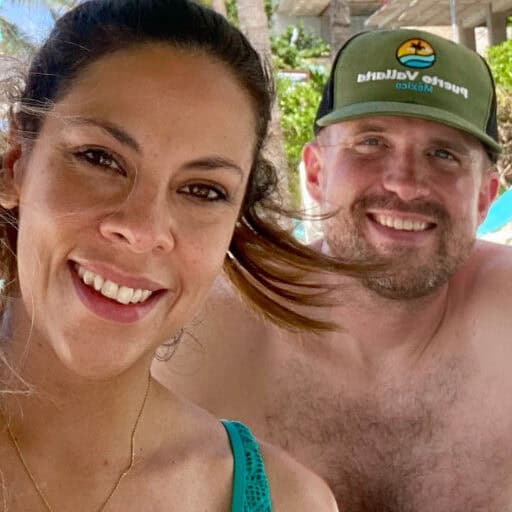
Hi – I’m Mariana Lange – A Mexican National Who Loves Mexico! I was born in Mexico City but was primarily raised in Guadalajara. My parents, siblings, and I moved to Texas in the 90s.
Every summer, my parents would send me back to Mexico City, Jalisco, Tabasco, and Quintana Roo with my extended family for three full months.
That’s how I became fully bilingual and completely bi-cultural. I would spend my summers in various parts of Mexico, like Cancun, Playa del Carmen, Toluca, Queretaro, San Miguel de Allende, Mexico City, Cuernavaca, and Morelia, visiting family members all over the country. My extended family still lives in Mexico, so I split half my time between the U.S. and Mexico.
I’ve also lived all over the world, including Germany, Italy, and Panama. So, I know what it’s like to move to another country.
I met my husband, Dustin, in Austin, Texas, where we adopted our fur baby, Loolu.
A few years ago, Dustin and I were getting tired of the rat race in Austin. The cost of living is increasing yearly, and we feel like we might have to work until we die.
After COVID, we’ve seen inflation as we’ve never seen before. I know that many of you might feel the same way. You know you don’t want to work forever, but you don’t see any other way to afford your lifestyle. I started looking into a few countries where the cost of living could be lower without sacrificing our quality of life.

We looked at Spain, Portugal, Ecuador, Panama, Costa Rica, and Mexico. But Mexico kept coming up as our number one option.
For starters, I grew up here, but it also helped that both Dustin and I have spent a lot of time in Mexico and are familiar with various cities and cultures.
I began to research everything I could about moving to Mexico as a foreigner and found that a lot of the information I found online had either never been updated or failed to be accurate. I found a lot of great free resources online about moving to Mexico and retiring in Mexico. But I also found terrible and wrong advice.
It’s so frustrating when you want to get a clear answer. Right?
That’s when our website, Mexico Relocation Guide, was born. I began to put together a handy website where I can share accurate, easy-to-follow, and up-to-date information with YOU in mind. And to take it one step further, the information I share isn’t based solely on my research. It has also been written, verified, and fact-checked by several professionals like immigration lawyers, insurance brokers, real estate agents, the Mexican government, and such. That way, you’re getting accurate and up-to-date advice.
Dustin helps me manage all things website-related. I focus on creating content on our YouTube channel and other social media. And together, we run the Mexico Relocation Guide!
It’s a team effort!
Welcome. We are so glad you are here!
Get Our FREE Email Series on Living in Mexico
Not ready to come to Mexico yet?
That’s ok! You can get an insider overview of what it’s like to live or retire in Mexico in this 10-part series, Living and Retiring In Mexico. You’ll even see an example of someone’s current budget and the actual cost of living to give you a general idea of what it will actually cost to live in Mexico.
This email series will give you a good overview of life in Mexico- the RIGHT way! Not some fluff to get you to buy real estate or land somewhere. We give you the good, the bad, and the ugly. That way, you can decide if Mexico is right for YOU.
Just enter your name and email above, and we’ll email you the first lesson right away… Top 10 Reasons to Retire in Mexico. FREE to you. Sign up here




